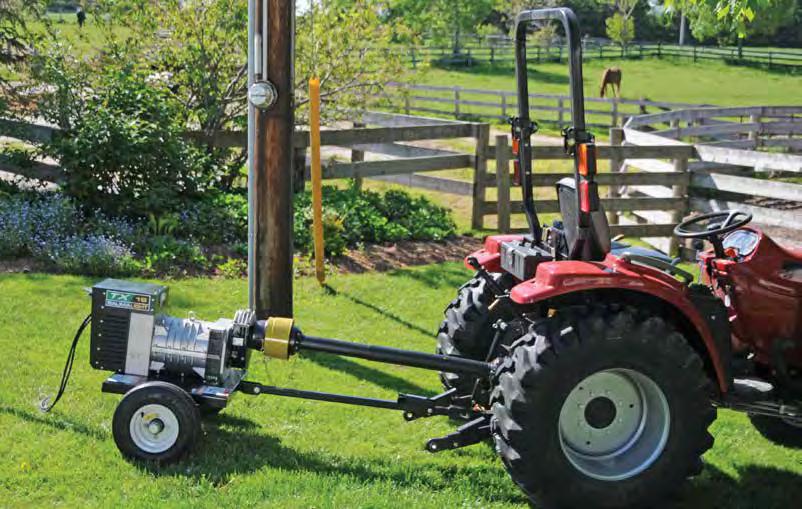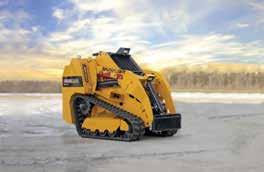




















































Dave Maples Thoughts from
Dr. Michelle Arnold Rethinking High-Risk Stocker Calf Management
70 Kevin Laurent Observations from 25 years of West Kentucky Select Bred Heifer Sales
16Quality Heifer Developer
18KCA Convention 2025 Preview
20Kentucky Cattlemen's Foundation License Plate Now Available
22Kentucky Cattlemen’s Association Awards Veterinary Scholarships
30KJCA Fall Classic
42Kentucky Farm Bureau Names Brenda Paul of Bourbon County its 2024 Kentucky Farmer of the Year
46October 1 Kentucky Crop Production Forecast
12County News
14Legislative Update
30KJCA
44Economic and Policy Update
48Membership
50Kentucky Beef Council
52Kentucky Beef Network
54The Drive
65Kentucky Angus News
68Calendar of Events
69Advertisers Index
69Classifieds

Staying low lying to the ground and in its seedling stage for 8-16 weeks, this hard to control species must be targeted in young growth stages.
timed application: Late Fall (at emergence) Best Recommendation: DuraCor at 20oz/ac

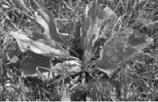
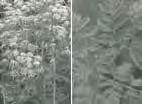




A registration paper itself isn’t worth the paper it is printed on. It is the data behind the animal on that registration paper that is valuable. There are registered herds that only utilize the association’s registry and make no use of the breed association’s performance testing and genomic capabilities. What makes these cows more valuable for commercial beef production than a typical commercial cow or registered cows with only that “worthless” registration paper is the data. Five decades of meticulous data collection has selected for a population of extremely profitable cattle. A deep dive into EPDs supports that. Data collection on the animals on this list helps quantify what the animal is and what to expect once it enters your herd. The production, cow size, udder, foot, and hair shed data are there as a guide in your decision-making. Cows that show up every 12 months, are at a size that fits your environment, have udders that last, feet that don’t break down, and a hair coat that sheds off promptly in the spring are necessities in fescue country to be profitable. Land grant extension faculty continually preach using economic indices over typical production traits when selecting bull genetics and replacement females for commercial beef producers. We have provided $Maternal and $Combined numbers to allow for that. Printing space limits the amount of information we can publish, and when buying replacements, we think the production and phenotypic data are as important as many of the EPDs. To view full EPDs, please enter the provided registration number online into the database. It can be provided in PDF form on the entire group upon request.
These three to five-year-old cows have been thoroughly evaluated and sifted through to ensure the highest probability that they make profitable replacements in your herd whether you are a progressive commercial producer, beginning seedstock producer, or simply need replacements in your registered herd. They are young, middle-ofthe-herd, cows that are only leaving our population to make room for bred heifers. There are certainly cheaper cattle out there. There are also higher-priced cattle out there. There are no cattle that are more profitable and have as much data behind them as this set of spring-calving cows. A cow that doesn’t show up with a calf at weaning is siphoning the profit off the cows that do. Data collection at this level is very time-consuming and certainly not cheap. However, it is an insurance policy to minimize the number of non-productive cows siphoning the profit from cows actually pulling their weight. You are much better off with ten cows that show up like they are supposed to than having 11 cows that cost 10% less, but only 10 of them show up. If you have any questions or need additional information on specific animals please don’t hesitate to reach out.

COMMITTEE
OFFICERS:
President
JEFF PETTIT Sebree
President Elect
RANDY WARNER Sharpsburg
Vice President
ALLAN BRYANT Eminence
Treasurer
KEN ADAMS Upton
Past President
ANDY BISHOP Cox’s Creek
KCA Program Chairman
DANIEL HAYDEN Whitesville
KBC Chairman
RYAN MILLER Lebanon
KBN Chairman*
ALLAN BRYANT
Beef Solutions Chairman*
DANIEL HAYDEN *ex officio
REGION 1
Wayne Zoglmann, John Mark Brown, Ashley Holloway, Leland Steely, Gary Woodall, Coleman Ladd, Susan Zoglmann, Bill Plemmons, Kenton Howard, Sara Roberson
REGION 2
Phyllis Gentry, Joe Lowe, Allison Nissley, Rayetta Boone, Robbie Hatfield, Chris Imbruglio, Maggie Webb, Mike Jones, Corbin Cowles, Glenn Byrd, Isaac Thompson, Kenneth Green, Trent Jones, Brian Manion, Joe Mike Moore, Amy Cecil
REGION 3
Amanda Hall, Nathan Lawson, James Brown, Phillip Douglas, Larry Bryant, Lincoln Clifford, Abbey Biddle, Ben Tinsley, Kevin Perkins, Kyle Bush, Michelle Simon, Craig Retzlaff
REGION 4
Amy White, Brad Reynolds, Chad Anglin, Phillip Stamm, Danielle Harmon, Bruce Witt, Jodi Purvis, Mike Ravencraft, Ronnie Lowe, Danny Callahan, Jason Crowe, Rob Amburgey
REGION 5
Adam Chunglo, Brent Woodrum, Tommy Spalding, Dean Craft, Doris Hamilton, Rick Brewer, Brent Williams, Anne Bays, Terry Mattingly, Ryan Miller, Phillip Reese, Tommy Glasscock Executive


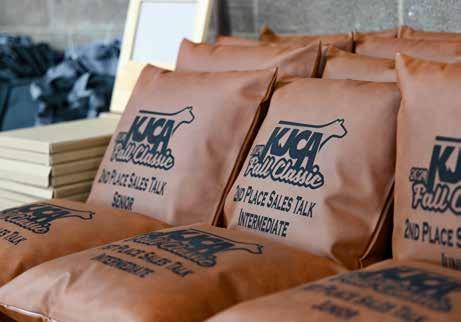
Todd
Rachel
Amelia
Danny
Dan
Debby
Katie
Alex
Becky
Kelly
Nikki

Happy Fall y’all!
Jeff Pettit KCA President
It’s that time of year, cooler weather, baby calves and Christmas decorations already in the stores!
As I write this article, we just returned from Bowling Green where we had our board meeting in conjunction with our KJCA Fall Classic event. I felt we had a great board meeting, and I would like to say “Thank You” to all that showed up. The news and reports we received from staff and juniors were all top-notch! KCA is blessed to have the support of our membership and the passionate staff that work everyday to help all beef producers in the state of Kentucky.
Our membership report indicated that we closed our membership year down just a bit at 11,029. While this is still a great number, I suppose given the current trends of lower cattle numbers, drought conditions, older age of producers and the continued loss of agricultural land, this isn’t surprising.
I would like to challenge each of you to think a little outside the box, while a large percentage of our members are producers, being a producer isn’t a requirement for KCA membership. We need to actively begin recruiting anyone that supports the production of beef and/or enjoys eating beef as a part of their diet. Our members only need to be passionate about beef in some form, and they can work alongside the producers to better connect with the consumer and protect the resources needed for us to continue to be able to put those ribeye’s in the center of the plate! If you sell beef direct to a consumer that isn’t a producer, invite them to join KCA. Let them know that by joining our association they show support for our industry and help us confront the challenges of the future. The list of potential members is huge if you just think about it beyond the producer level. Just think about anyone or businesses that support beef production,
(local grocery stores, bankers, feed/ fertilize/seed stores, fencing companies, equipment dealers/manufacturers, etc.), and don’t forget the consumer! You get my point; our membership base is larger than just producers.
At the most recent board meeting, we also heard reports that demonstrated all the work our staff is doing on behalf of its members. Our Kentucky Beef Council is working with dieticians and medical professionals in multiple states to promote beef and its health benefits. They are also looking at new ways to better reach consumers as well as finding ways to continue to increase value from the new cuts of beef. The Kentucky Beef Network continues to provide educational opportunities for producers and through training events and onthe-farm applications at Eden Shale. Beef Solutions is growing our reach with Kentucky Cattlemen’s Ground Beef and getting this product into the hands of new consumers each month.
The report that really hit home with me was the report from the Kentucky Junior Cattlemen’s Association. KJCA board members were on hand to give the adult board a report on their activities. All I can say is that this group of junior board members gave us an excellent presentation that was presented with professionalism and clarity. Our future is in good hands, and as adults, we need to do our best to not mess it up for them! That weekend concluded with around 120 junior cattlemen participating in various competitions and educational events as well as exhibiting 170 head cattle in their annual KJCA Fall Classic show. It was a blessing to see the growth of our junior program!


Jonathan Shell Agriculture Commissioner of Kentucky
The largest all-breed, purebred livestock show in the country returns to Kentucky Nov. 7-21. The competition will take place on the iconic green shavings at the Kentucky Exposition Center in Louisville. The reward? Purple and gold banners.
That gold is appropriate this year because it is the golden anniversary of the North American International Livestock Exposition (NAILE). The event began 50 years ago this month, Nov. 17 to be exact. Over the past five decades, winners of as many as 10 livestock divisions have been crowned annually from nearly 30,000 entries from all 48 contiguous states.
Kentucky seized the opportunity to create NAILE in the early 1970s. The International Live Stock Exposition had been held at Union Stock Yards in Chicago since 1900, but when the stockyards closed in 1971, many were concerned that the expo would end as well. So, a group of Kentucky livestock breeders approached Gov. Wendell Ford about creating a new major livestock show in Louisville.
Within a year, the show’s planning committee created a beef cattle show, with an intention to expand to dairy, swine and sheep in the future. Gov. Ford held a press conference in June 1973 announcing the new livestock show would be planned by the Kentucky Department of Agriculture (KDA). Harold Workman, KDA’s beef and swine show supervisor, was appointed secretary-manager of NAILE. The North Wing of the Expo Center is named in his honor.
In 1976, the National Collegiate Livestock Judging Contest, established in 1900 at the International Live Stock Exposition, moved from Chicago to NAILE in Louisville.
NAILE expanded to two full weeks in 1977 with the addition of three more species: dairy, market swine and Quarter Horses.
A Children’s Barnyard, with a variety of juvenile livestock animals and hatching chickens, debuted at the 1977 expo.
This year, KDA has been tasked with creating a mini AgLand, a smaller version of the successful feature in South Wing A during the Kentucky State Fair.
In 1980, Doug Shepherd, a NAILE volunteer from the very beginning, was named beef cattle superintendent, a post he had for 35 years.
Five shows have been added during the past 40 years, including: draft horses (1983), dairy goats (1988), llamas and alpacas (1992), Boer Goats (2000), and mules and donkeys (2007). In 2015, NAILE enjoyed a record-setting year with 29,181 entries.
Happy 50th birthday, NAILE! Here’s hoping the next 50 years see continued growth and success.
The inaugural NAILE was Nov. 17-23, 1974 in Louisville. To help attract an audience for the new expo, a country music concert by George Jones and Tammy Wynette was booked.
SALE
SELLING 225 SPRING CALVING BRED HEIFERS
heifers are guaranteed bred to bulls with
SELLING 225
The first NAILE was a beef show for five breeds, drawing 1,742 entries from 40 states and three Canadian provinces. The first expo included a junior livestock show and the National 4-H Livestock Judging Contest, which moved from Chicago to its new home in Louisville.
EPDs and have met stringent requirements for health, quality and pelvic measurements.
- TENNESSEE LIVESTOCK MARKET GUTHRIE, KENTUCKY
Many of the leaders from those early days – such as Workman, general manager; Jack Ragsdale, chairman of the Advisory and Executive committees; Garland Bastin, general superintendent; Charles Barnhart, dean of the University of Kentucky College of Agriculture; and Claude Brock, director of media operations – would serve NAILE for decades. These leaders were supported by a small army of dedicated volunteers, with the entire team focused on exhibitors’ interests and needs.

Sheep were added to NAILE in 1975. Bob Hall was the first chairman of the Sheep Advisory Committee, a post he would hold through 2012.
KDA established an International Visitors Center at the 1975 event to provide services for visitors and exhibitors from abroad. Hayden Timmons signed on as the ring announcer in Freedom Hall during the 1975 expo, and he would be the “Voice of NAILE” for the next 36 years.
KENTUCKY-TENNESSEE LIVESTOCK MARKET GUTHRIE, KENTUCKY SATURDAY, NOVEMBER 23, 2024 12:00 NOON CENTRAL TIME
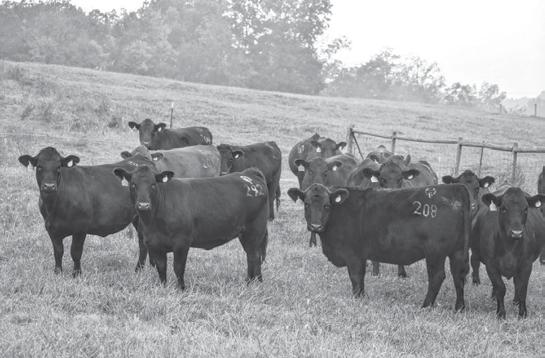


Dave Maples Executive Vice President
We just finished up a very nice third quarter KCA full board meeting and the 20th Annual KJCA Fall Classic in Bowling Green. I am so proud of our KCA board. The attendance was awesome as it is with most of our board meetings. This was a very important board meeting because it was where we passed our annual budgets and marketing plans. The organization has multiple budgets vetted by the budget committee, and at this meeting, they were presented to the board for their approval. I was seated in the front of the room so I could see everyone in the audience as KCA President Jeff Pettit lead the meeting and our team came forward to present their reports.
Our staff presents a great deal of information to the board members in a relative short time period, so it is about like drinking from a fire hose. To be honest, there were things that I learned that we were doing. KCA is not like most state cattlemen’s associations in that we have several different departments or really businesses under the KCA umbrella. During the board meeting, we started with the Beef Council reports. The Beef Council team handles the Beef Checkoff programs. The funds are highly looked at from several different eyes, so we have to have a budget and a plan on how the dollars will be spent. Then, as staff, we have to follow the budget and the plan.
Following the Beef Council was the KCA portion of the meeting. Highlights were the announcement of the ground breaking of the Kentucky Livestock Innovation Center. Followed by the Kentucky Junior Cattlemen’s Association report. I enjoyed watching the facial expressions and pride in our board members as the young cattlemen presented their reports. The young people did a great job. Our KJCA is really on the right path and making some nice moves.
It is really nice to be involved with an organization that has all the business and policy issues but also operates a farm with cows as well as has a retail product in a major retail chain. I can tell you it keeps me on my toes trying to keep up with everything that is going on in the office. Our KBN team and the Beef Solutions team are always on the go.
Charolais Breeder Since •
Breeder Since 1962
Charolais Breeder Since 1962 • Bulls Available
Ø Bull calves out of HCR Answer HCR SPIRIT 4007.
Ø Bull calves out of HCR Answer 2042 and HCR SPIRIT 4007.
Ø Bull calves out of HCR Answer 2042 and HCR SPIRIT 4007.
After the board meeting, I stayed in Bowling Green to support Bradon Burks and the KJCA officers as they hosted and produced the 20th Annual Fall Classic. This event is way more than a heifer show. There were participants that were under 6 years old in some of the events. They had quiz bowl, livestock judging, photo contest, team fitting contests and several more on top of the live animal show. This is a very nice event. If you have young adults or children that need a place to find themselves in the beef industry, I would highly suggest that you attend one of their multiple events. Bradon is trying his best to build a program that fits any kid with an interest in cattle.
Ø Bred for calving ease and growth.
Ø Bred for calving ease and growth.
Ø Bulls for both purebred and commercial breeders.
Ø Bulls for both purebred and commercial
Ø Bred for calving ease and growth.
Ø Yearlings and two-year-olds available.
Ø Yearlings and two-year-olds available.
Ø Bred heifers to calve in fall available.
Ø Bulls for both purebred and commercial breeders.
Ø Bred heifers to calve in fall available.
Ø Yearlings and two-year-olds available.
John Allison 545 Eminence Road
John Allison, Owner 545 Eminence Road New Castle, KY 40050 502-220-3170
David Carter, Farm Manager 502-706-0075
John Allison, Owner 545 Eminence Road New Castle, KY 40050 502-220-3170
Ø Bred heifers to calve in fall available.
New Castle, KY 40050 (502) 220-3170
John Allison, Owner 545 Eminence Road New Castle, KY 40050 (502) 220-3170
David Carter, 502-706-0075
John Allison, Owner 545 Eminence Road New Castle, KY 40050 502-220-3170 David Carter, Farm Manager 502-706-0075
One of the highlights for me at these youth events is the opportunity to get to talk to the next generation of beef producers. I had breakfast with three very sharp young ladies. I knew I was asking them some rather indepth questions but I wanted to hear their opinion. These ladies are from generational farms. They know if their family farms are going to keep going, it will be up to them, so I wanted to hear their opinion. Over the years, I have gained the trust and confidence in several of the young people where they readily talk to me about what they are doing on their farms. In some cases, they are more eager to speak with me about their cattle operations than some of the parents. It really made me feel good when I heard one young man say to me, “Hey Dave. See you next time.”

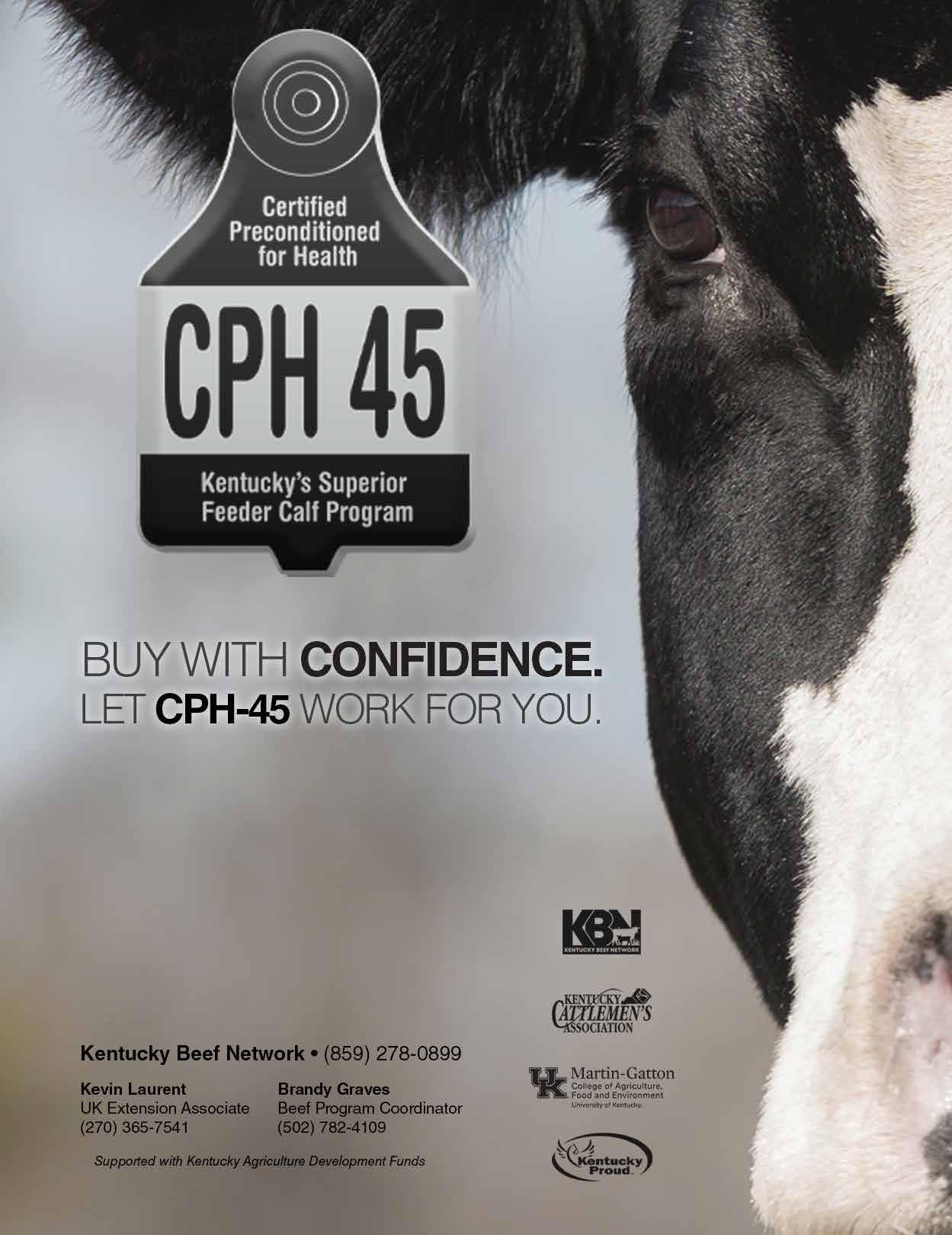
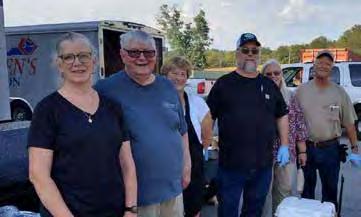
submitted by Ken Wininger and Carol Spiegl
The Barren County Cattlemen’s Association’s Cooking Crew prepared 250 steaks for the Barren County Farm Bureau Annual Meeting on Sept. 21.
The Barren County Cattlemen’s Association met Sept. 17. The meeting and meal were sponsored by Haywood Sales and Service and South Central Bank. Pictured from left are Mike Cox, owner of Haywood Sales and Service; Dr. Steve Webb, Barren County Cattlemen’s Association president; Todd Lockett, agricultural lender with South Central Bank; and Glenn Byrd, Barren County Cattlemen’s Association program coordinator.

submitted by Moe Hensley
The Metcalfe County Cattlemen met on Sept. 9 at the Metcalfe County Extension office. ProSolutions of Hiseville was the sponsor for the meeting, and Daniel Crain and Jon Keightley were on hand to answer any questions anyone had about what they had to offer. Kenny Burdine, UK livestock economist, gave a presentation about marketing strategies with issues like, to wean or not to wean. He also spoke of the e-newsletter “Cattle Market Notes Weekly.”
During the business session, Master Cattleman classes, the CAIP program, the Spotlight Farmer and Metcalfe County Cattlemen T-shirts were discussed.
submitted by John Walpole
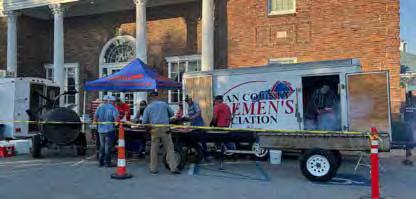
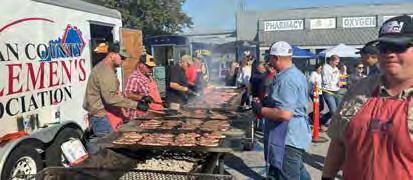



NCBA RELEASES FINDINGS FROM CATTLE PRODUCER TAX SURVEY
Data Shows Urgent Need for Tax Relief to Protect Family-Owned Cattle Operations
WASHINGTON (Oct. 8, 2024) – On Oct. 8, the National Cattlemen’s Beef Association (NCBA) released a report analyzing data collected in a nationwide tax survey of America’s cattle producers. With the 2017 Tax Cuts and Jobs Act set to expire at the end of 2025, NCBA collected this survey data to better understand how key tax provisions, such as Death Tax relief and business deductions, impact family-owned cattle operations.
“When I was starting out in the ranching business, I saw the devastating impact of the Death Tax firsthand and this tax nearly killed my dream of ranching with my family,” said NCBA President and Wyoming rancher Mark Eisele. “This experience pushed me to fight for lower taxes on farms and ranches, and the data collected by NCBA shows that many other producers around the country have faced similar pressure from devastating tax bills too. I urge our policymakers to see the story this data is telling—that farmers and ranchers need lower taxes to stay in business and continue feeding the world.”
The respondents to the tax survey indicated that 99% operated family-owned farms or ranches and 64% were third-generation cattle producers or greater. Additionally, the survey showed strong support for provisions such the 1031 Like-Kind Exchange, Section 179 Expensing, Bonus Depreciation and Section 199A Small Business Deduction. The data also showed that a quarter of respondents spend more than $10,000 annually for tax preparation, filing and potential audits, all expenses that only add further pressure to agricultural operations.
“Farms and ranches are unique small businesses, and they face a variety of challenges that our tax code must address,” said NCBA Executive Director of Government Affairs Kent Bacus. “The survey data shows strong
support for tax provisions that help cattle producers reduce their taxes and invest in essential assets for running a successful cattle operation. To protect our farming and ranching heritage, we need Congress to step up and back tax provisions that help cattle producers save more of their hard-earned money and set up the next generation of cattle producers for success.”
To view the full report, visit https:// tinyurl.com/3xtadst4.
Scholarships Available for College Students Pursuing Careers in the Beef Industry
CENTENNIAL, Colo. (Oct. 7, 2024) – The National Cattlemen’s Foundation (NCF) is now accepting applications for the 2025 CME Group Beef Industry Scholarship. Ten scholarships of $1,500 each will be awarded to outstanding students pursuing careers in the beef industry.
Introduced in 1989 and sponsored by CME Group, the scholarship identifies and encourages talented students who play a vital role in the future of food production. Students studying education, communication, production, research or other areas related to the beef industry are eligible to apply for the annual scholarship program.
“ We are pleased to continue the CME Group Beef Industry Scholarship program with the National Cattlemen’s Foundation and National Cattlemen’s Beef Association to support the next generation of agriculture producers,” said CME Group’s John Ricci, managing director and global head of agricultural products. “For 35 years, these scholarships have helped students develop critical risk management skills as they pursue their careers in agriculture, cultivating strong leaders for our global food system well into the future.”
Eligible applicants must be a graduating high school senior or full-time undergraduate student
enrolled at a two- or four-year institution. The application process includes submitting a one-page letter expressing career goals related to the beef industry, a 750-word essay describing an issue in the beef industry and offering solutions to this problem, and two letters of recommendation. The applicant or a family member must be a member of the National Cattlemen’s Beef Association.
The application deadline is Nov. 8, at midnight Central Time. For more information and to apply, visit www. nationalcattlemensfoundation. org. Scholarship winners will be announced during CattleCon 2025, Feb. 4-6, in San Antonio, Texas.
Organized in 1972, NCF is a 501(c) (3) nonprofit organization providing charitable, scientific and educational activities to benefit the cattle industry

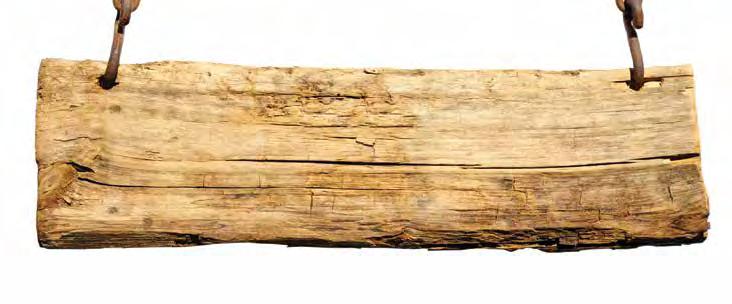












Katie Pratt Kentucky Cattlemen's Association
CASEY COUNTY, KY - Lots of solid red and black calves come running when Casey County producer LJ Watson pulls up in his 1989 Ford pickup. They patiently wait as he exits the vehicle and watch as he begins pouring buckets full of feed into troughs for them.
“I don’t know what I will do when it quits running,” Watson said about his truck. “The cattle all recognize it and know to come with they see it because usually I’m bringing them feed.”
As he pours the feed, the large number of calves don’t fight each other for a prime feeding spot but work methodically so everyone has a place and space to eat. That’s the gentleness and efficiency Watson breeds for and likes to see from the animals in his operation.
Watson is considered by many in the industry to be one of the state’s premier cattlemen, particularly in the area of heifer development. Over the years, he has developed a herd that is healthy, calm, consistent and maternally strong.
“I enjoy breeding cows and seeing how they turn out,” Watson said. “I like to see if I made the right decision on bull buying day.”
Watson started farming in 1971 with his dad and brother. They were in the dairy business, but LJ preferred beef cattle. He has stayed in beef and forage production his entire career. For many years, he also grew tobacco.
Watson purchased his main farm, located 2.5 miles from his family homeplace in the Poplar Hill area of Casey County, in 1987. Today, he also farms on several pieces of land, including his family’s farm that he co-owns with his sister. In total, he runs around 200 cow-calf pairs on around 260 acres−all located within a 4-mile radius. He also has rented another farm since 1975 that he uses mainly for forage production. It is about 8 miles away. He farms with his nephew Tim Goodlett.
The Herd
Watson’s herd is comprised of Red Angus and Sim-Angus cattle. He likes the Red Angus breed because of their disposition, fleshiness, moderate frame and efficiency. He uses the Sim-Angus cattle for their growth potential. He will keep the moderate-framed Sim-Angus heifers.
“I’m looking for a moderate-framed cow with the capacity to handle tall fescue because they seem to breed better in this environment,”
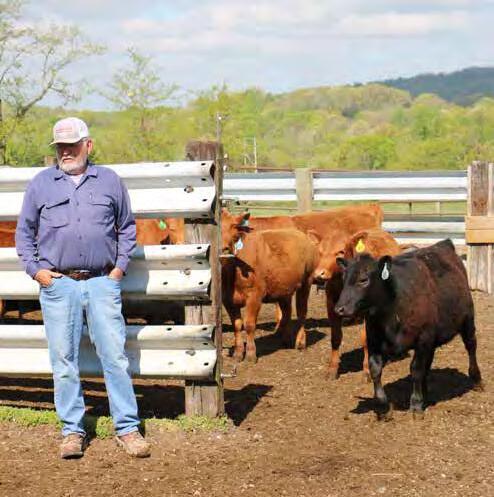

Watson said.
Watson has a fall-calving herd now but that was not always the case. He gradually shifted his reproduction schedule to fall calving in the early 2000s and completely switched over his herd by 2004.
“I didn’t want to fight the mud and cold weather that came with spring calving,” Watson said. “I always make sure that I have good quality hay and have stockpiled feed so my fall-calving animals maintain their body condition.”
The reproduction schedule change was a large undertaking but a challenge Watson was willing to tackle to improve his herd.
“L.J. is willing to change,” said Jacob Settles, KBN field associate. “If something isn’t working, he’s going to change it. He is out for quality.”
Breeding for Docility
Watson selects cattle based on their maternal traits, and he has been doing genomic testing on his herd for the past three years. Docility is the single most important trait for him, but he also selects for moderate-framed cattle with slick coats.
“Genomics is a good way of getting a better idea about what you’ve got,” Watson said.
He uses genomics for a baseline on his heifers. He brands his heifers based on their genomic maternal trait rankings. That serves as visual marker to him of the cow’s ranking as it follows its reproductive performance. He will cull cattle that are not productive.
“He knows that good mama cows have
good calves,” Settles said. “He breeds for the good mama cows.”
Extra Attention and Feed Are Key Watson has always developed and retained his own heifers. He keeps a close eye on them as they grow and keeps them together until they have had their second calf. At that point, he mixes them in with his older cows.
“I haven’t bought a cow since 1993,” Watson said. “I’ve always developed my own heifers because I like knowing exactly what I have.”
Consistency is a big part of LJ Watson’s operation. Keeping the heifers together while they are young creates a sense normalcy for his young animals, which reduces the cattle’s stress and increases docility.
“They all grow up under one strand of electric fence, and they know what it is,” Watson said.
Watson believes the key to a successful herd is through nutrition. During the growing season, his cattle will graze on pastures comprised mostly of tall fescue and orchardgrass with a little bit of clover mixed in. He will cut hay early in the season and wrap it to make haylage.
“I want superior quality from my hay, and cutting early is key to getting the best quality,” Watson said. “I’ve produced haylage since I bought a wrapper in 2013. It was a great investment and been a monster help in allowing me to give my cattle quality feed.”
He makes sure his heifers receive the highest quality haylage because it increases their chances of successful breeding.
Watson tries to keep a tight calving window for his animals. His heifers are exposed to his bulls for 60 days, but according to his vet, his animals this year were bred within 30 days. He starts calving at the end of August and usually finishes up around mid-October.
“Most of the time, I end up with a calf crop that is half red and half black,” he said.
He will wean and background his cattle until they are around 700 pounds and will usually sell a pot load of steers in late July. He also sells through private treaty.
Watson began selling some of his bred heifers in 2009 and continues to do so as he has extra stock available. Typically, he will sell some of his heifers in Casey County’s Liberty Belle Sale, which he helped start and plays an important role in each year.
“The idea for the sale actually came from a cattlemen’s association meeting,” Watson said. “The sale is a good place for local people to market their heifers and buy some better heifers. Our ultimate goal is to improve the breeding stock in the county.”
Even though he’s a seasoned cattle producer, Watson is constantly looking for ways to improve his operation and plans to keep farming as long as he enjoys it.
“I’m not satisfied with where I’m at, but I will get better,” Watson said. “I enjoy farming a whole lot since I quit the tobacco business.”

Early Bird Registration (October 21 - December 13) $60 Registration (After December 13) = $85
Event Cost Number Attending Totals
Full Registration
(Includes Trade Show and Business Meetings)
$60 x = Trade Show Only $25 x =
Junior Registration (21 years or younger) $25 x =
FRIDAY, JANUARY 17
Evening Banquet
$70 x = choose one Steak Chicken
Banquet Preferred Seating (Table of 10)
Ladies Program
$720 x =
$50 x =
Total Amount Due
Names as they should appear on badges. Please only one family or individual per registration form.
WEDNESDAY, JANUARY 15
10:00-5:00Trade Show Move-In
3:00KCA Foundation Meeting
4:00KCA Executive Committee Meeting
6:00KCA Leadership Dinner (Invitation Only)
THURSDAY, JANUARY 16
7:00-6:00Registration Hours
7:00-10:00Trade Show Move-In
9:00-11:30Beef Efficiency Conference
10:00Trade Show Opens
11:30Welcome Lunch
1:30-3:30Opening General Business Session
6:00Trade Show Closes
FRIDAY, JANUARY 17
6:30-5:00Registration Hours
7:00-9:00County President Breakfast (Invitation Only)
8:00Trade Show Opens
10:00-11:00 Regional Meetings
11:00KCA Concessions Lunch in the Trade Show
12:30-2:00Closing Business Session
2:00Trade Show Closes
2:00KJCA Officer Meeting (Current KJCA Board Members Only)
2:15 KJCA Annual Membership Meeting & KJCA Board of Director Elections
2:30-4:30Forages at KCA
2:30-3:30Ladies Program
3:00KJCA Reception
5:00-6:00 KCA Leadership Alumni & Past President’s Reception (Invitation Only)
6:00Evening Banquet
REGISTER BEFORE DECEMBER 13 and be entered to win one of two $50 CABELA'S GIFT CARDS
Mail to: KCA Convention Registration 176 Pasadena Drive Lexington, Kentucky 40503 Or Fax: (859) 260-2060
THURSDAY, JANUARY 16
Beef Efficiency Conference
Maximizing Efficiency: Balancing Nutrition, Genetics, and Forage for Success
Cooling Clover Mineral for Heifers
Dr. Brittany Davis USDA-ARS Forage Research Center
What is Optimum for Your Operation?
Dr. Aaron Berger University of Nebraska-Lincoln
The Full Picture of Cow Efficiency
Dr. David Lalman Oklahoma State University

MONDAY FEBRUARY 24TH AT 5:30 CST.
SELLING

FRIDAY, JANUARY 17
forages at kca
Matching Genetics to Forage Resources
Developing Genetics for Forage
Based Systems
Dan Glenn
Deep Grass Graziers
Genetics for Fescue Based Systems
Dalton Bennett Knoll Crest Farms
Forage Update
Ray Smith University of Kentucky

Rachel
Cain Kentucky Cattlemen's Association
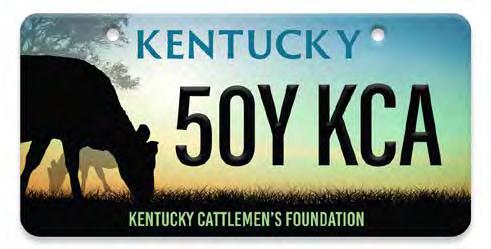


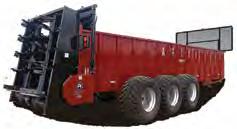
The Kentucky Cattlemen’s Association is proud to announce that a special license plate is now available at your local county clerk’s offices across the state of Kentucky! Revenue from all sales and renewals of this license plate will go directly to the Kentucky Cattlemen’s Foundation, a non-profit organization whose mission is to pursue opportunities that promote the profitability of the cattle industry in Kentucky through educational and philanthropic endeavors.
The Kentucky Cattlemen’s Foundation currently funds many programs, scholarships, and charitable efforts, including:
• Youth Scholarships
• Large Animal Veterinary Scholarships
• YARDS Education Center
• Youth Heifer Initiative
• Leadership Development Program
• Disaster relief efforts Currently, the Foundation is funded primarily through private donations.
The Foundation will utilize any additional funding generated through the Special License Plate Program to support existing programming of the Foundation in the areas of education, youth, and leadership development.
The Kentucky Cattlemen’s Foundation license plate is not a replacement for your Farm Tag, nor does it fall under the same category. Instead, this specialty tag serves as a perfect complement to your Farm Tag. Available to everyone—regardless of acreage or farming status—it’s ideal for your daily drivers, supporters of the Foundation’s mission, and those who wish to celebrate Kentucky’s rich agricultural heritage!
The cost to purchase and renew the plate is $44. The Kentucky Cattlemen’s Foundation will receive $10 of both the issue and each annual renewal of the license plate. Visit your local county clerk to order your Kentucky Cattlemen’s Foundation specialty plate, or visit https://tinyurl.com/kyspecialtyplate for more information.


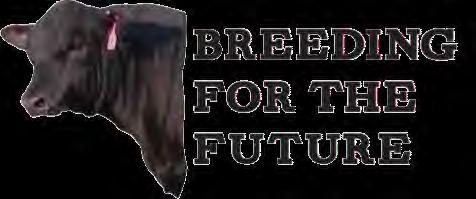











LEXINGTON, KY - For over a decade, the Kentucky Cattlemen’s Association has proudly supported the next generation of veterinarians through its scholarship program. Each year, two scholarships are awarded to third- or fourth-year students from Kentucky enrolled in a college of veterinary medicine. Funded by the Kentucky Cattlemen’s Foundation, these scholarships have contributed over $77,000 since their inception in 2008, empowering aspiring veterinarians to pursue their dreams and strengthen the agricultural community in Kentucky.
This year, two winners were awarded the KCF Veterinary Medicine Scholarship. Allison Berry from Nelson County is a graduate from Midway University and currently in her third year at the Auburn University College of Veterinary Medicine. Lexie Craig from Bath County is a graduate from Morehead State University and currently in her third year at the Auburn University College of Veterinary Medicine.
The Kentucky Cattlemen’s Foundation mission is to pursue opportunities that promote the profitability of the cattle industry in Kentucky through educational and philanthropic endeavors. For more information visit www.kycattle.org or call 859-278-0899.

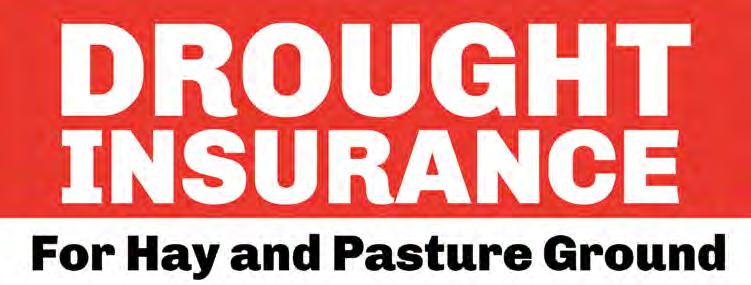


Katie Pratt Kentucky Cattlemen's Association
Since 2001, the Kentucky Beef Network has worked to increase net farm gate revenue by working directly with farmers to improve production practices and offer education opportunities, demonstrations and other outreach efforts. To make these advancements, it takes many hands to execute these programs and initiatives, and KBN has a partnership with the University of Kentucky Extension to ensure producers get the programs and support they need. Below are members of the current Kentucky Beef Network team who have a least a portion of their salary paid through the KBN grant that is funded by the Kentucky Agricultural Development Fund.
Becky Thompson, KBN directorBecky Thompson has been the director of KBN since 2008. In this position, Thompson leads the team dedicated to advancing Kentucky’s beef industry. Thompson manages the grants from the Kentucky Agricultural Development Fund to ensure the continued growth and sustainability of the state’s beef industry. Through collaborative efforts with the UK Beef Extension Team and KBN staff, she oversees program development, implementation and reporting. She also oversees the vision and operations of Eden Shale Farm and works with Greg Cole, farm manager, and Dan Miller, farm superintendent, to ensure the farm’s production goals and educational programming align with KBN’s broader mission.
Thompson grew up on a feedyard in central Nebraska and received her bachelor’s in ag business from Northwest Missouri State University.
Maggie Ginn- UK beef extension coordinator, west- Stationed at the UK Research and Education Center in Princeton, Ginn offers support for UK Beef Extension programming efforts through KBN in Western Kentucky under the direction of Katie VanValin, UK beef extension specialist. Ginn organizes meetings, conducts farm visits and plans educational events.
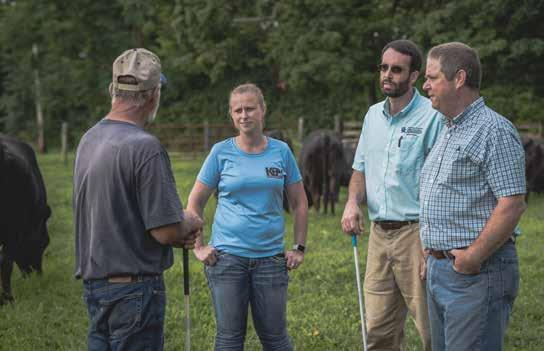

She is also the statewide contact for the Master Cattleman Program, which is offered to producers at multiple times and at multiple locations each year. She offers on-farm producer support including administering cattle vaccinations and offering cattle pregnancy checks for Western Kentucky producers enrolled in the Back-to-Basics program.
A Princeton native, Ginn grew up around beef cattle. She received her bachelor’s degree in agribusiness from Murray State University.
Jake Harrod, KBN program coordinator- Harrod is responsible for administering the Beef Quality and Care Assurance Program, which is available to producers both online

and in-person including chute-side training and classroom options. He has also been instrumental in the development and execution of the Kentucky Junior Cattlemen’s Association’s Academy and Cattle Working Contest. Through a partnership with the Kentucky Beef Council, these events teach Kentucky youth BQCA principles and can help them earn BQCA certification. He ensures traceability for cattle who enter into one of the state’s valueadded sales. He also manages the Eden Shale Farm and KBN social media accounts.
Harrod grew up on a cattle farm in Frankfort and continues to play an integral role in the operation. He

earned his bachelor’s degrees in animal sciences and agribusiness from Morehead State University.
Kevin Laurent- UK agriculture extension specialist- Laurent has been an integral part of the KBN since 2001. He currently oversees the educational component of the CAIPrequired BQCA program. He is also the point person for the Post-weaning Value-Added Program (PVAP) and the value-added West Kentucky Heifer and the CPH-45 sales that are held at the Kentucky-Tennessee Livestock Market in Guthrie. He teaches the marketing component of the Master Cattleman program, offers support of the Back-to-Basics Program and makes numerous farm visits to KBN participants. He assistants in assessing beef systems, identifying areas for management improvement, helps producers implement management practices and aids in data collection.
A Louisiana native, Laurent has bachelor’s and master’s degrees in animal sciences from Louisiana State University. While at LSU, he coached the livestock judging team. He has been at UK since 1992, first working with swine. He has worked in beef cattle education since 2000.
Dan Miller, KBN industry coordinator- As a producer and superintendent of Eden Shale Farm, Miller brings a practical, on-farm approach to KBN programs that is easily relatable to producers. Miller oversees the direction of KBN’s statewide network of field associates and supports their activities. At Eden Shale, he works to make sure the farm’s goals and educational programs align with KBN’s mission. Miller works to educate producers about the farm’s
best management practices so they can implement them on their own farms to improve their operations. He speaks about Eden Shale and the role it plays in increasing net farm gate revenues to diverse audiences in many different locations.
A native of Pulaski County, Miller has a bachelor’s degree from the University of Kentucky in natural resource conservation and management.
Tyler Purvis- UK beef extension coordinator, east- He is the lead coordinator on the Back-to-Basics program. That program helps producers implement basic production practices to improve their operations. Purvis is in charge of planning, supporting and facilitating UK extension programs on the eastern side of the state. Due to his location, that includes planning Beef Bash and the Seedstock Symposium and Bull Value Assessment Program. He also does producer farm visits and artificial insemination work under the direction of UK’s Les Anderson and Darrh Bullock.


A Laurel County native, Purvis got his introduction to the cattle industry by bottle feeding calves for his family’s operation. He has a bachelor’s degree in animal sciences from UK and is pursuing his master’s in animal reproduction at UK with an anticipated graduation date of May 2025.
Caroline Roper, UK Master Grazer coordinator- Roper works with UK forage extension specialists to coordinate and support educational events, develop educational materials and collect and analyze program evaluations. These events include Kentucky Grazing Schools, multiple fencing schools, Forages@KCA, Electric Fencing School and forage components of KCA events and the Master Cattleman program. She is working with the Kentucky Forage and Grassland Council to help them develop a strategic plan that includes priority areas for cattle producers. She also has developed the Master Grazer Facebook page and is developing tools producers can use to strategically improve their operation’s social media accounts.
A native of Orlando, Florida, Roper moved to Marion, Kentucky, in 2021 to raise registered South Poll cattle and a commercial herd. She has a bachelor’s and master’s degrees from the University of Florida and is currently pursuing her doctorate at the university.




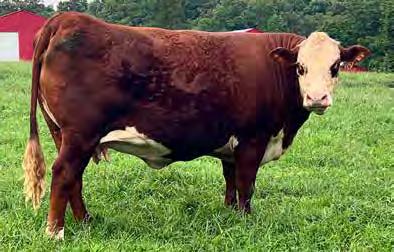
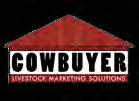





(5 mg/mL doramectin, 150 mg/mL levamisole hydrochloride)
CAUTION: Federal law restricts this drug to use by or on the order of a licensed veterinarian.
INDICATIONS:
VALCOR™ is indicated for the treatment and control of the following species of parasites in beef cattle two months of age and older and in replacement dairy heifers less than 20 months of age. Not for use in beef bulls intended for breeding over 1 year of age, dairy calves, and veal calves.
Gastrointestinal Roundworms (adults and fourth stage larvae): Ostertagia ostertagi (including inhibited larvae), O. lyrata, Haemonchus placei, Trichostrongylus axei, T. colubriformis, T. longispicularis*, Cooperia oncophora, C. pectinata*, C. punctata, C. surnabada, Bunostomum phlebotomum*, Strongyloides papillosus*, Oesophagostomum radiatum, Trichuris spp.*, Nematodirus helvetianus*. Lungworms (adults and fourth stage larvae): Dictyocaulus viviparus. Eyeworms (adults): Thelazia spp. Grubs (parasitic stages): Hypoderma bovis, H. lineatum. Sucking Lice: Haematopinus eurysternus, Linognathus vituli, Solenopotes capillatus. Mange Mites Psoroptes bovis, Sarcoptes scabiei. *Adults only WARNINGS AND PRECAUTIONS:
WITHDRAWAL PERIODS AND RESIDUE WARNINGS:
Cattle must not be slaughtered for human consumption within 15 days following last treatment with this drug product. Not for use in female dairy cattle 20 months of age or older, including dry dairy cows; use in these cattle may cause drug residues in milk and/or in calves born to these cows or heifers. Not for use in beef calves less than 2 months of age, dairy calves, and veal calves. A withdrawal period has not been established for this product in pre-ruminating calves.
User Safety Warnings:
Not for human use. Keep out of reach of children. If accidental eye contact occurs, flush eyes immediately with water for 15 minutes and seek medical attention. If wearing contact lenses, flush eyes immediately with water before removing lenses then continue rinsing for at least 15 minutes. Do not eat, drink or smoke while handling the product. Wash hands after use. Take care to avoid accidental self-injection. If accidental injection occurs, seek medical attention and provide product package insert to medical professional. To obtain a Safety Data Sheet(s), contact Zoetis Inc. at 1-888-963-8471 or www.zoetis.com.
Animal Safety Warnings and Precautions:
Use of levamisole in cattle treated in the last few days with cholinesterase inhibitors such as organophosphates or with morantel may enhance the toxic effects of levamisole. Use together with caution.
Destruction of Hypoderma larvae (cattle grubs) at the period when these grubs are in vital areas may cause undesirable host-parasite reactions including the possibility of fatalities. Killing H. lineatum when it is in the tissue surrounding the gullet may cause bloat; killing H. bovis when it is in the vertebral canal may cause staggering or paralysis. These reactions are not specific to treatment with VALCOR™ and can occur with any successful treatment of grubs. Cattle should be treated either before or after these stages of grub development. Consult your veterinarian concerning the proper time for treatment. Follow recommended dosage carefully. Reproductive safety has not been evaluated in bulls intended for breeding.
ADVERSE REACTIONS:
This product is likely to cause swelling at the injection site. Tissue damage at the injection site may also occur, including possible granulomas and necrosis. These reactions have resolved without treatment. Local tissue reaction may result in trim loss of edible tissue at slaughter. A single death attributed to clostridial infection associated with the injection of VALCOR™ was reported in a nonpivotal effectiveness study. Observe cattle for injection site reactions. If injection site reactions are suspected, consult your veterinarian. This product is not for intravenous or intramuscular use. Hypersalivation may be observed; however, this reaction will disappear within a few hours. If this condition persists, a veterinarian should be consulted.
Contact Information:
Contact Zoetis Inc. at 1-888-963-8471 or www.zoetis.com. To report suspected adverse drug experiences, contact Zoetis Inc. at 1-888-963-8471. For additional information about reporting adverse drug experiences for animal drugs, contact FDA at 1-888-FDA-VETS or http://www.fda.gov/reportanimalae.
TARGET ANIMAL SAFETY:
Margin of Safety: Subcutaneous administration of VALCOR™ was well tolerated in calves as young as 3 months of age at 1, 2, or 3 times the recommended dose. Dose-dependent post-dose hypersalivation was seen in all treated groups compared to the controls. All cases of hypersalivation were mild, transient, and resolved without further medical intervention. Dose-related injection site reactions were observed, and those in the 1X group resolved between 21 and 28 days post injection. Injection site reactions were primarily swelling which resolved between 21 and 28 days post injection. Findings from the injection sites included swelling, edema, inflammation, muscle necrosis and fibrosis.
Female Reproductive Safety: The reproductive safety of VALCOR™ was established in two studies with female cattle. First, a single dose of VALCOR™ was administered subcutaneously at 3 times the recommended dose at times coinciding with folliculogenesis, implantation, or organogenesis, and had no effects on conception, calving, abortion, and stillbirth rates, and post-natal viability up to 30±2 days post-calving. There were no congenital abnormalities. The only test article-related change was an increase in incidence and duration of swelling at injection sites compared with control, but all swellings eventually resolved. In a second study, a single dose of VALCOR™ administered subcutaneously at 3 times the recommended dose at either early or late gestation had no effects on calving, abortion, and stillbirth rates, and post-natal viability up to 30±2 days post-calving. One control calf and two treated calves were born with congenital abnormalities and did not survive. These were not determined to be test article-related. The only test article-related change was an increase in incidence and duration of swelling at injection sites, but all swellings eventually resolved. Not for use in bulls intended for breeding over 1 year of age, as reproductive safety has not been evaluated.
HOW SUPPLIED:
VALCOR™ is available in 100 mL, 250 mL and 500 mL multi-dose, rubber-capped glass vials.
STORAGE, HANDLING, AND DISPOSAL:
Store below 25°C (77°F). Do not expose to light for extended periods of time. Do not contaminate water by direct application or by improper disposal of drug containers. Dispose of containers in an approved landfill or by incineration.
Approved by FDA under NADA # 141-553

You can achieve effective parasite control in one product, where before you may have needed two. Valcor (doramectin and levamisole injection) is the first prescription cattle dewormer with two active ingredients in one dose. It’s never been easier to be tough. Get tough at ValcorTough.com.

IMPORTANT SAFETY INFORMATION: Do not treat cattle with Valcor within 15 days of slaughter. Not for use in female dairy cattle 20 months of age or older, including dry dairy cows; not for use in beef calves less than 2 months of age, dairy calves, and veal calves. Safety has not been evaluated in breeding bulls. Use with caution in cattle treated with cholinesterase inhibitors. This product is likely to cause injection site swelling; tissue damage (including granulomas and necrosis) may occur. These reactions have resolved without treatment. See brief summary of Prescribing Information attached.

Michelle Arnold DVM (Ruminant Extension Veterinarian, UKVDL)
Bovine Respiratory Disease (“BRD”) or “shipping fever”, also known as bronchopneumonia, continues to be the most common cause of illness and death in post-weaned (stocker) calves despite significant improvements in the vaccines and antibiotics available today. Traditionally, disease prevention through vaccination was thought to be the answer to improving stocker health outcomes, but the current vaccination recommendations are not meeting the challenge as morbidity and mortality rates continue to rise. There is an increasing amount of research focusing on the importance of the normal, healthy “microbiota” (bacterial population) in the upper respiratory tract to maintain calf health and improve immunity. This normal microbial population modulates, or controls, host immune defenses through several mechanisms including 1) competition with the pathogenic organisms (the bad bugs) for nutrients, 2) through production of inhibitory compounds toxic to the pathogens, 3) through recruitment of white blood cells to defend the lung tissue, and 4) by stimulating antibody production, specifically the immunoglobulin IgA, to protect the mucosal surface of the respiratory tract. However, cattle diagnosed with BRD have a significantly disrupted microbiota that instead allows pathogenic bacteria to flourish. Examining ways to preserve the normal microbiota while stimulating the immune system is the new frontier currently under exploration to hopefully reduce sickness, death loss and antimicrobial use, especially in the stocker calf sector. Is it time to limit management procedures and treatments that have a profound influence on the respiratory microbiota to better the health of high-risk stocker calves?
The stocker industry is vital to the economic success of Kentucky cow/calf operations. Calves marketed off the farm through the sale barn are generally in no way, shape or form ready to enter feedlots to be fed to slaughter weight. These calves often arrive to the yards in small groups, sometimes 10 or fewer, that were weaned on the trailer on the way to the sale. Many calves are lightweight (<400 pounds) and in poor nutritional and trace mineral status, unvaccinated, males are intact bulls and a portion of the heifer calves are pregnant. On arrival at the yards, the

calves are commingled with calves from multiple sources, most with unknown vaccination and deworming history, then are weighed, sold and eventually transported to a stocker or backgrounder operation. Either before leaving the yards or on arrival at the stocker facility, calves are administered a modified-live (MLV) respiratory vaccine, a blackleg vaccine, dewormed and implanted. Additionally, calves commonly receive a long-acting antibiotic to prevent bronchopneumonia, a practice known as “metaphylaxis.” The time it takes to move through this critical transition period, from when the calf leaves the farm of origin to arrival at the stocker/backgrounder operation, can vary greatly depending on how long they stand at the yards before and after the sale and the distances they are transported. The longer calves stand without rest and with limited access to feed and clean water, the more likely they will arrive at their new facility dehydrated and in a negative energy balance. These stocker procurement decisions to buy unweaned, unvaccinated, intact calves at the sale and then add stress through weaning, transport, commingling and diet change, administration of MLV vaccines and metaphylaxis, profoundly disrupt the normal respiratory microbiota (Figure 1) and set the stage perfectly for shipping fever pneumonia.
We have known for a long time that “stress” weakens the calf immune system, allowing viruses to invade and compromise lung defenses, enabling bacterial pathogens to reach areas deep within the lungs and initiate bronchopneumonia. Stress also negatively affects vaccine effectiveness in the field. But is all stress the same? Acute or short-term stress that lasts 24 hours or less affects the immune system differently than chronic stress that may last for days or weeks. A good example of acute stress is vaccinating calves prior to weaning as part of a preconditioning program. Calves experience a short-term stress from being worked through the chute and given the MLV vaccine, but the immune system responds as it should to the challenge and there is adequate time for protection to develop prior to weaning. Chronically stressed calves, on the other hand, administered MLV vaccine have too much immune system suppression from cortisol (the stress-induced hormone) that can result in replication and nasal shedding of vaccine virus, more symptoms of BRD and more antibiotic treatment. Killed respiratory virus vaccines do not have enough antigens to stimulate a timely protective response in stressed calves. So, what is the answer to prevent disease if vaccines cannot do it alone?
To maintain health, the focus should
shift towards preservation of beneficial microbiota during the critical transition from the home farm to the stocker operation through stress reduction, nutritional management, strategic vaccine use and limiting antibiotic therapy to only the individuals that need treatment. Stress reduction and nutritional management at the cow-calf level may be in the form of preconditioning programs that require pre-weaning vaccinations, castrations and weaning on the farm for a 45-60 day period to prepare them for sale. At the yards, stress reduction may include allowing calves access to good grass hay and clean water while at the facility, periodically wetting the ground if dust is an issue, not overcrowding pens, and facilitating quick and easy loadout after calves are sold. Strategic vaccine use may be delaying the 5-way modified live respiratory vaccination up to 21-30 days post-arrival at the stocker facility to give high-risk cattle the opportunity to overcome stress-induced immune dysfunction. The impact of chronic stress, dehydration and lack of energy experienced on arrival at stocker operations has a known, profoundly negative effect on immune function and vaccine effectiveness. Similarly, metaphylaxis (administering long-acting antibiotics to calves upon arrival at the stocker facility) disrupts the beneficial bacteria in the upper respiratory tract, resulting in greater colonization of the lungs by bacterial pathogens, namely Mannheimia haemolytica, Pasteurella multocida, Histophilus somni, and Mycoplasma bovis, as well as increasing resistance in those bad bugs to antibiotic therapy. Limiting treatment to calves showing signs of BRD (depression, off-feed, fever > 104 degrees, increased respiratory rate) will preserve the efficacy of antibiotics when they are truly needed for survival.
The importance of the stocker/ backgrounder sector to the vitality of the state’s cow/calf industry cannot be overstated. These operations provide feedlots a year-round, steady supply of calves ready to be fed to slaughter weight. Acknowledging the importance of preserving the normal microbiota through stress reduction, better nutritional management, strategic vaccine use and limited antibiotic use throughout the transition from farm to stocker facility could significantly reduce sickness, death loss and antimicrobial use in calves. Talk with your veterinarian about where your operation fits in the beef cattle production system and how you can contribute to calf health and productivity.
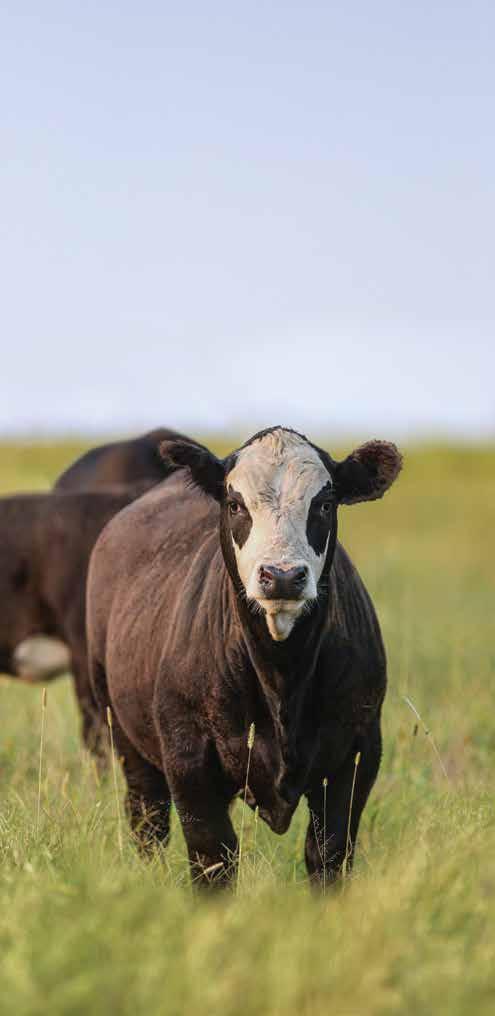
Herefords are known as the efficiency experts for a reason. Herefords boost pregnancy rates by 7% and add $30 per head in feedyard profitability in a crossbreeding system. And Hereford genetics bring unrivaled hybrid vigor, longevity and disposition.


Bradon Burks KJCA Advisor
The Kentucky Junior Cattlemen’s Association held the annual KJCA Fall Classic Oct. 4-6. With over 115 kids and 170 head of cattle, we had a weekend full of young, passionate beef cattle enthusiasts who were all eager to compete in a variety of beef-related contests. As a former Fall Classic participant, I can tell you that this event is a highlight of many of our juniors’ year.
On Friday, exhibitors participated in the Beef Skillathon Contest. The skillathon is designed to test the exhibitor’s knowledge of the beef industry and its numerous components. It encompasses six beef industry content areas; carcass breakdown, retail meat cut identification, breeding and genetics, livestock feeding, cattle handling and care, and cattle handling equipment. After the skillathon, the judging contest was held where exhibitors evaluated four classes of cattle, and answered questions on them. We would like to thank Oak Hollow Angus and Rocking C Cattle Company for providing cattle for the contest, as well as Jason P’Pool and Terry Burks for officiating our contest. We then enjoyed a meal by The Chuckwagon (John Ethington) and a presentation on perfecting your sales talk by Terry Burks.
Saturday morning came early with Showmanship/ Prospect Market Show and Sales Talk going on. Showmanship gives participants the opportunity to be evaluated on how well they are able to present
their animal, while the Prospect Market Show is based on the animal’s market readiness. These shows were evaluated by Wyatt and Ashley Stierwalt of Atlanta, Illinois. In Sales Talk, exhibitors give an actual sales pitch to two judges who are acting as the buyers for the scenario. Participants were given an item to sell/scenario for what the buyer was looking for. Thank you to Logan and Kayla Haven, as well as Austin and Rachel Cole for judging the sales contest.
Saturday evening, the fun kept going for the exhibitors! The Team Fitting Contest gives participants the chance to fully fit an animal from start to finish, and they are then evaluated on use of equipment, skill level and general knowledge. Wyatt and Ashley Stierwalt also judged this contest; thank you to them! We had a meal Saturday night, made possible by John Ethington’s “The Chuckwagon” and Dr. Steve Webb and Terri Webb. We then held our auction and awards presentation where we recognized the winners of those contests. Later that night, parents and kids celebrated with Chaney’s Dairy Barn ice cream and showed off their best dance moves at the Barnyard Dance!
KJCA board of directors Elly Hampton and Mollie Goode led our Church Devotion before our breeding show began. Jason Farmer of Brownstown, Indiana, sorted our show. We definitely had some fierce exhibitors on Sunday.
As always, none of this would be possible without the many sponsors, volunteers and supporters of the KJCA. The KJCA board of directors are excited to continue our event next year Oct. 3-5 in Bowling Green.
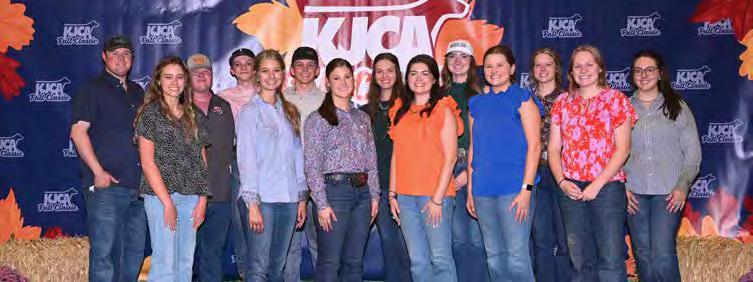
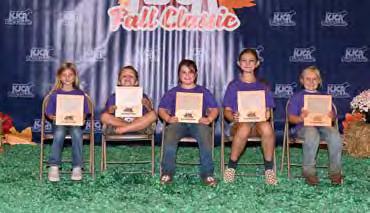

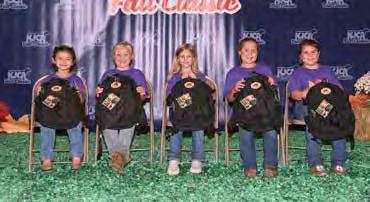

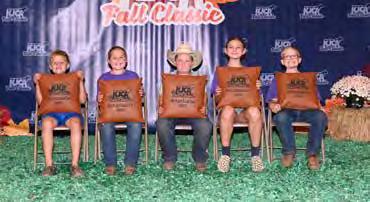





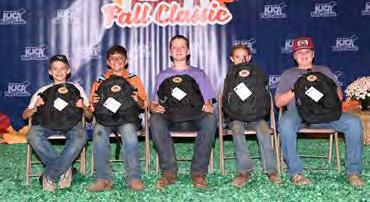





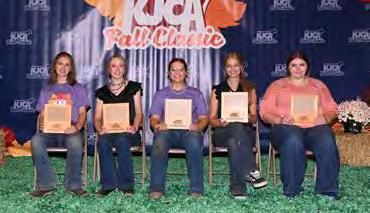





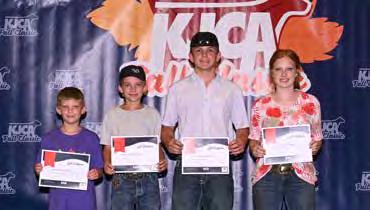


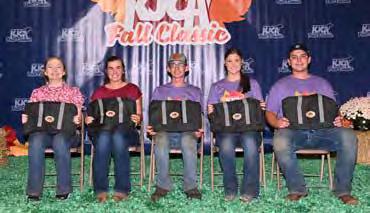

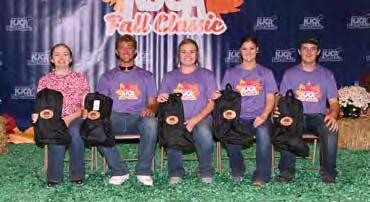




10th Place: Owen Gripshover
9th Place: Tillman Derossett
8th Place: Lucy Kate Sexten
7th Place: Brynlee Turner
6th Place: Boone Bishop
5th Place: Mckenzie Washer
4th Place: Kelsey Whaley
3rd Place: Noah Adams
2nd Place: Katie Whaley
1st Place: Sawyer Klaire Thompson
10th Place: Halle Washer
9th Place: Benton Wise
8th Place: Clara Fritsch
7th Place: Levi Womack
6th Place: Jake Bishop
5th Place: Luke Keith
4th Place: Sawyer Carter
3rd Place: Clark Smith
2nd Place: Oliver Gripshover
1st Place: Sadie Jackson
10th Place: Clara Bishop
9th Place: Jackson Kidd
8th Place: Emma Hogan
7th Place: McKenna Jackson
6th Place: Hallie Hughes
5th Place: Creighton Smith
4th Place: Samantha Pecco
3rd Place: Sophia Smith
2nd Place: JJ Jackson
1st Place: Ty Jones
10th Place: Kaitlyn Keith
9th Place: Weslee Alsip
8th Place: Hannah Keith
7th Place: Davi Thompson
6th Place: Craig Holloman
5th Place: Austin Petow
4th Place: John Warren
3rd Place: Madeline Ethington
2nd Place: Bryanna Smith
1st Place: Haley Polley

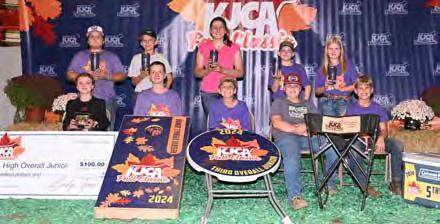






Grand Champion Cow Calf: JJ Jackson
Reserve Champion Cow Calf: Tillman Derossett
Top 5 Breeding Heifers
3. 3rd Overall: Kyra Moore (%Simmental)
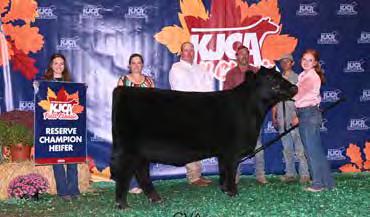
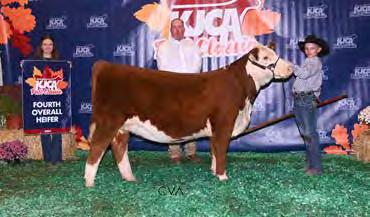
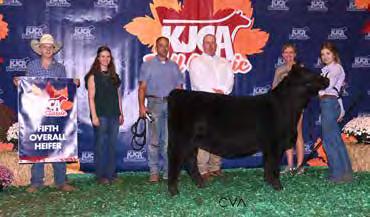


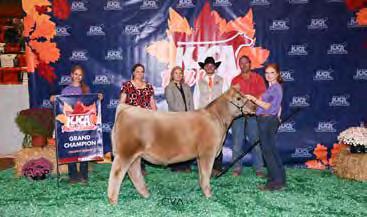
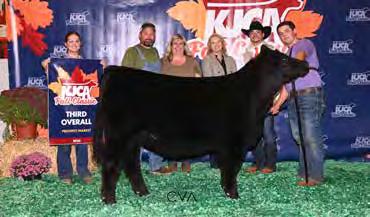
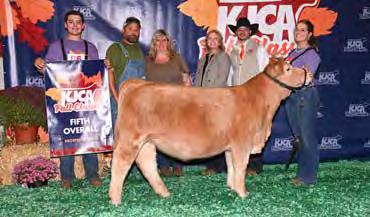
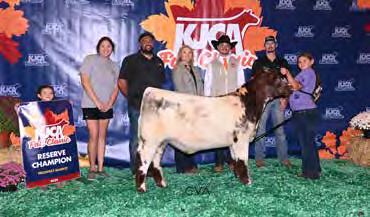

Grand
Reserve
Top 5 Prospect Market
1. Grand Champion: Kyra Moore
2. Reserve Champion: Brooklyn Thomas
3. 3rd Overall: Weslee Alsip
4. 4th Overall: Kyra Moore
5.
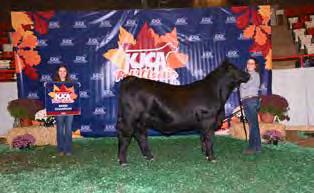
GRAND CHAMPION ABERDEEN HEIFER


CHAMPION ANGUS BULL GRAND CHAMPION AMERICAN INFLUENCED HEIFER
CHAMPION AMERICAN INFLUENCED HEIFER
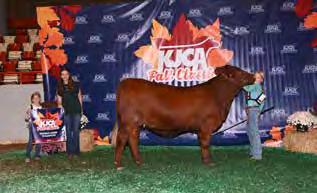
GRAND CHAMPION ABERDEEN BULL
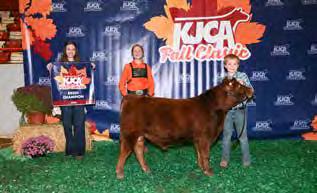
GRAND CHAMPION ANGUS HEIFER RESERVE CHAMPION ANGUS HEIFER


CHAMPION ANGUS BULL
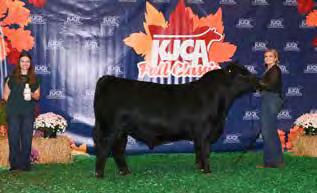

GRAND CHAMPION %AOB HEIFER RESERVE CHAMPION %AOB HEIFER




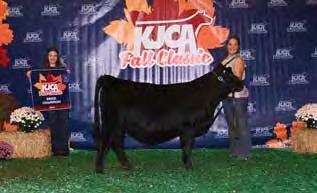


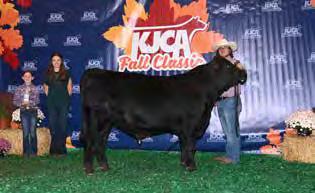

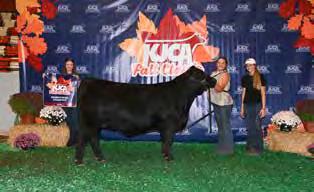
Thank you to our PLATINUM SPONSORS: Champion Show Supply • Farm Credit Mid America • Shelby County Cattlemen’s Association
Thank you to our GOLD SPONSORS: Barren County Cattlemen's Association • Green River Embryo Transfer • Jimmy’s Naturals • The Chuckwagon/John Ethington • Blue Grass Stockyards • United Producers Inc. • Lubrisyn-HA • Hampton Meats
RESERVE CHAMPION HEREFORD HEIFER

RESERVE CHAMPION HEREFORD BULL
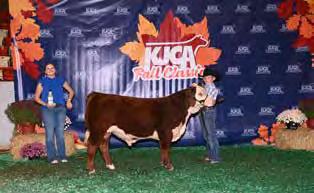
RESERVE CHAMPION LIMOUSIN HEIFER
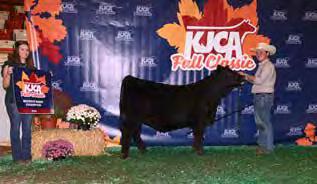
RESERVE CHAMPION RED ANGUS HEIFER

RESERVE CHAMPION RED ANGUS BULL

GRAND CHAMPION HEREFORD BULL

GRAND CHAMPION LIMOUSIN HEIFER

GRAND CHAMPION RED ANGUS HEIFER
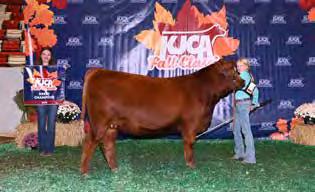
GRAND CHAMPION RED ANGUS BULL
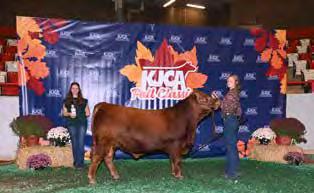
GRAND CHAMPION SHORTHORN HEIFER
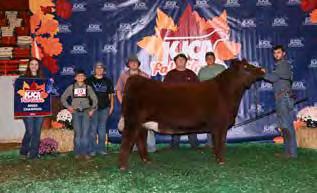
RESERVE CHAMPION SHORTHORN HEIFER
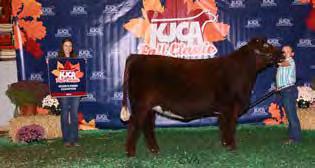
RESERVE CHAMPION SHORTHORN PLUS HEIFER
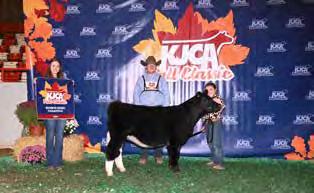
RESERVE CHAMPION SIMMENTAL HEIFER

RESERVE CHAMPION %SIMMENTAL HEIFER

RESERVE CHAMPION %SIMMENTAL BULL

GRAND CHAMPION SHORTHORN PLUS HEIFER

GRAND CHAMPION SIMMENTAL HEIFER

GRAND CHAMPION %SIMMENTAL HEIFER
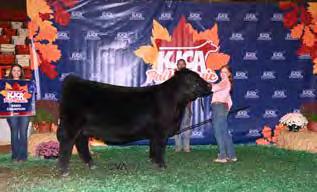
GRAND CHAMPION %SIMMENTAL BULL
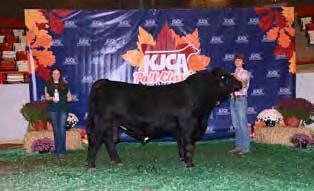
Thank you to our SILVER SPONSORS: Animal Clinic of Glasgow • Select Sires/Dan Johnson • Multigen Reproductive Solutions • Rocking P Livestock • CPC Commodities • HB Farms • Patton Seldom Rest • Vitalix/ Daniel Reynolds
Thank you to our BRONZE SPONSORS: GENEX/Jason Crowe • Performance Feeds LLC • Henry County Supply Inc. • Jury Farmview • Greenpoint AG • Armstrong Farms • Night Shift Farm • Diamond P Cattle
And also thank you to: Oak Hollow Angus • Rocking C Cattle
LOUISVILLE, KY (Oct. 2, 2024) — Kentucky Farm Bureau (KFB) today announced that Brenda Paul of Bourbon County has been selected as the 2024 KFB Kentucky Farmer of the Year. She will be presented with this prestigious award during the organization’s annual meeting in December. The annual KFB Farmer of the Year award recognizes an individual whose efforts strengthen the state’s agriculture industry and demonstrate service and leadership, both on and off the farm.
Brenda Paul and her husband, Austin, have led a successful farming operation, Timberlawn Farm, since 1994. The farm, located in Paris, raises beef cattle, soybeans, wheat, alfalfa and other forage crops, as well as Thoroughbred horses. Brenda Paul also co-owns Cattle Marketing Group (CMG), a nationwide cattle dealer, with her husband. The couple’s two sons have joined their parents in the family businesses, with Nelson working full-time at Timberlawn Farm, and Spencer focusing most of his time at CMG and working part-time at the farm.
“I am honored to be selected as Kentucky Farm Bureau’s Farmer of the Year,” said Paul. “Operating a family farm is hard work but incredibly rewarding. I have enjoyed facing challenges to grow our farm business these past 30 years and plan to identify new ways we can continue to expand our operations, thrive as a family farm, and serve our community.”
Paul is known for her resilience, often taking setbacks and turning them into opportunities to increase the farm’s efficiency and ensure its longevity. This was her second year as a finalist in the Farmer of the Year program.
“Brenda has shown tremendous leadership, perseverance, and tenacity not only on the farm, but in her community,” said KFB President Eddie Melton. “She has a passion for excellence, whether that’s in enhancing agricultural practices through technology or elevating operations through her sharp business insights and strategic financial management.”




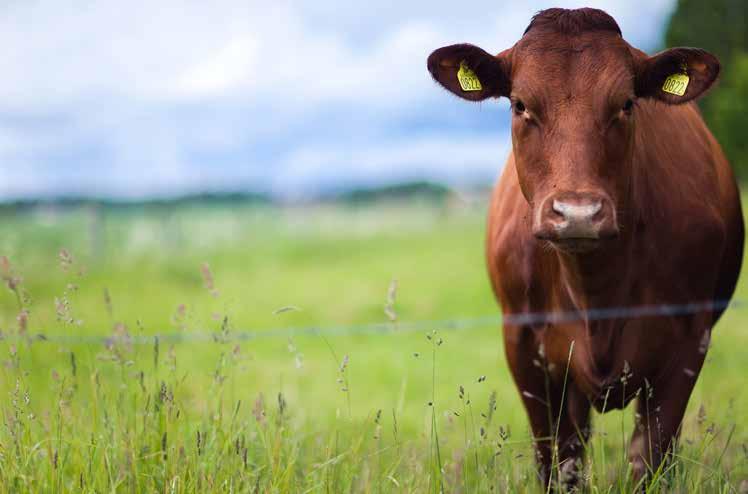










Suzy Martin KFBM Area Extension Specialist
The average family living costs for the 119 Kentucky Farm Business Management farm families whose 2023 living expenses were included in the family living study was $88,522 or $7,375 per month. Their average net farm Income (NFI) was $123,618. The average family living costs over the past five years have been $85,409 and the average over the last 10 years has been $79,023. The average NFI during those same periods has been $237,152 and $148,244, respectively. Total family living costs include contributions, medical, life insurance, capital items (nonfarm) and expendables. It does not include income and social security taxes which were an additional $31,941 for 2023.


















For 2023, the average earnings from non-farm income were $39,653. If you combine the NFI ($123,618) with the non-farm income ($39,553) you have a total of $163,271 available to fund family living needs. The total family living needs (including taxes) were $120,463. So, for 2023 there were enough available funds to support family living. If there were not enough funds to support the family living costs the additional funds would come from either savings accounts, stock accounts, sale of assets or from additional borrowing of funds. This is certainly a possibility for 2024 given the projected decrease in NFI and increased family living expendables. In addition, many operations defer tax liability which could result in a build-up in income tax liability from previous years that will be difficult to pay when cash flow is strained.
When harvest wraps up and operations start budgeting for the next crop year, it is always important not to overlook the line item for family living. Particularly if there are not any sources of non-farm income. There are a few costsaving measures that farm families can use to help trim the family budget. Health Savings Accounts and flex spending accounts can be used to put money away pre-tax for outof-pocket medical costs. Contributions could be made with commodities rather than cash, which would decrease the amount of social security tax owed. If the operation is a sole proprietorship or a partnership where the spouses are the only partners and their kids (under 18) work on the farm, then the amounts paid to them could be deducted as employee wages with zero withholdings. These are just a few ideas to help in planning the family budget. Talk to your financial advisor or tax preparer about the details and rules involved with these types of options.
As the previous numbers indicate, there is a wide variation year to year of NFI while there is a steady incline of family living expenditures. Discussing family living expenses can be difficult for everyone involved. However, budgeting ahead of time on how the family living needs will be met will alleviate issues later. Write the family living budget down! Remember, goals that are not written down are just wishes.
Jordan Shockley Associate Extension Professor
As companies continue their quest to mitigate their carbon footprint, achieving a “net-zero” goal is one slice of their sustainability pursuit. There are three main factors that are used to assess the sustainability and ethical impact of a company’s operation. These three factors are referred to by their acronym “ESG,” or environmental, social and governance. In recent years, ESG has become a critical concept in business, influencing how companies operate, make decisions and engage with communities. While ESG may seem like a concept reserved for large corporations or financial investors, it’s becoming increasingly relevant to all sectors, including agriculture. So, what does environmental, social, and governance mean for corporations, and what elements are considered under each initiative?
Environmental: The environmental aspect focuses on how the company impacts the planet. This includes a wide range of issues, from how the business sources raw materials to its carbon footprint and waste management. For example, a company may invest in renewable energy, like wind energy, to operate their facilities. In agriculture, a company may source climate-smart corn and soybeans to reduce the carbon footprint of their raw inputs.
Social: The social factor of ESG examines how companies manage relationships with people along their supply chain, employees, customers and community members. Labor rights, fair wages, safe working conditions, community engagement and customer satisfaction are elements of social responsibility.
Governance: Governance refers to how a company is run. Leadership structure, ethical practices and compliance with rules and regulations are critical elements in how decisions are made within the business. Accountability and transparency are required for stakeholder trust and the long-term sustainability of the organization.
Figure 1 illustrates that almost all the S&P 500® reported on their sustainability efforts in 2022. While ESG reporting will look and be named differently across each company, the overall goal is the same: communicate their ESG efforts to stakeholders. Example reports can be found below.
Tyson: https://www.tysonfoods.com/sustainability
Walmart: https://corporate.walmart.com/purpose/esgreport
McDonalds: https://tinyurl.com/juwxptje
Nestle: https://tinyurl.com/ytex5h78
Consumer demand, investment appeal, reducing the company’s risk profile and international trade are reasons why companies are pursuing the above initiatives. So why should farmers in Kentucky care? Understanding corporate ESG initiatives, especially the “E,” helps explain why companies are seeking “net-zero” goals. These “net-zero” goals are what is driving carbon markets in agriculture. Whether it is the development of the carbon offset market for businesses outside of agriculture or carbon insets where companies are looking to source climate-smart commodities, both approaches pose financial opportunities and risks in agriculture (learn more about carbon offsets and insets by visiting https://tinyurl. com/338cekfp). Stay tuned for more resources on ESG, carbon markets and the announcement of an upcoming webinar titled, “Preparing Farmers and Ranchers for the Evolution of Carbon Markets.”

The Agricultural Economics Department publishes the Economic and Policy Update towards the end of each month. Each issue features articles written by extension personnel within the department and other experts across the country.
Topics will vary greatly but regularly include marketing, management, policy, natural resources, and rural development issues. If you would like to recieve this newsletter by email, please contact Kenny Burdine at kburdine@uky.edu.
You can also view current and past issues online at https://bit.ly/2PoHsZj Co-editors: Kenny Burdine, Alison Davis, and Greg Halich
Corn production in Kentucky is forecast at 238 million bushels, down 1% from the September forecast and down 15% from the previous crop. Yield was estimated at 186 bushels per acre, down 1 bushels from last month and down 1 bushels from the 2023 level. Acres for harvest as grain were estimated at 1.28 million acres, down 220,000 acres from 2023. The U.S. corn production is forecast at 15.2 billion bushels, up slightly from the September forecast and down 1% from 2023. Based on conditions as of Oct. 1, yields are expected to average 183.8 bushels per acre, up 0.2 bushels from last month and up 6.5 bushels from 2023. Area harvested for grain is forecast at 82.7 million acres, unchanged from the September forecast and down 4% from 2023.
Soybean production for Kentucky is forecast at 104 million bushels, down 2% from the September forecast and up 4% from 2023. Yield was estimated at 51 bushels per acre, down 1 bushels from last month and down 4 bushels from a year ago. Acreage for harvest as beans was estimated at 2.04 million acres, up 220,000 acres from the previous year. U.S. soybean production is forecast at 4.58 billion bushels, down slightly from the September forecast and up 10% from last year. Based on Oct. 1 conditions, yields are expected to average 53.1 bushels per acre, down 0.1 bushels from last month and up 2.5

bushels from last year. Area for harvest is forecast at 86.3 million acres, unchanged from the September forecast and up 5% from 2023.
Kentucky burley tobacco production is forecast at 50 million pounds, unchanged from the September forecast and down 12% from 2023. Yield was projected at 2,000 pounds per acre, unchanged pounds from last month and down 100 pounds from the 2023 crop. Harvested acreage was estimated at 25,000 acres, down 2,000 acres from last year's crop. For the burley producing states production is forecast at 55 million pounds, down 15% from last year. Burley growers plan to harvest 28,600 acres, down 9% from 2023. Yields were expected to average 1,924 pounds per acre, down 135 pounds from last year.
Production of Kentucky dark fire-cured tobacco is forecast at 13.6 million pounds, unchanged from the September forecast and down 31% from the previous year. Dark air-cured tobacco production is forecast at 8.37 million pounds, down 4% from the September forecast and down 8% from last year.
Alfalfa hay production by Kentucky farmers is forecast at 264,000 tons, down 2% the 2023 level. Other hay production is estimated at 5.08 million tons, up 22% from last year.
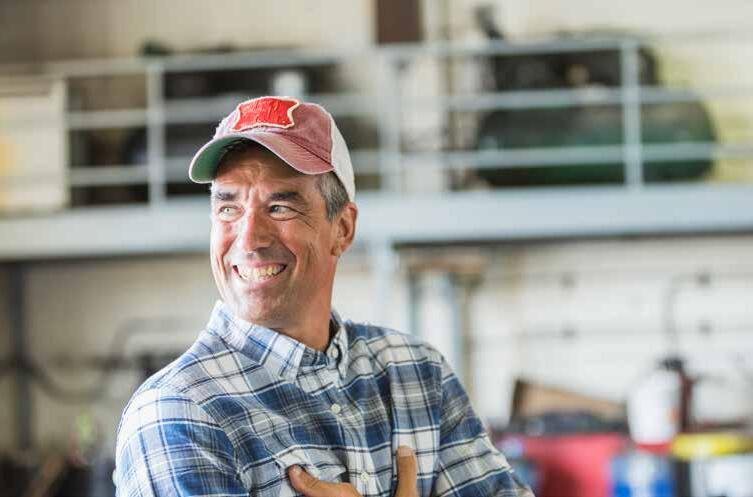
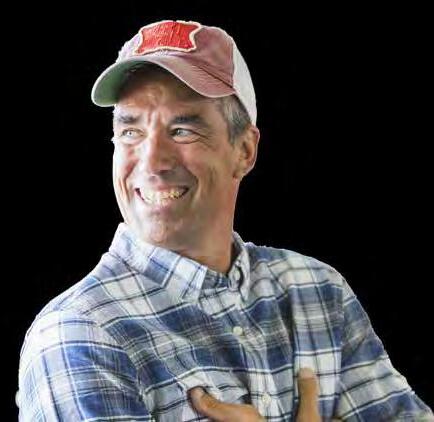
We are committed to community banking…to giving exceptional, personal service and rewarding team members who go the extra mile, to giving back to those in need and to growing local economies. We are committed to doing things the Traditional Bank way, as an independent bank with local decision makers, for generations to come.
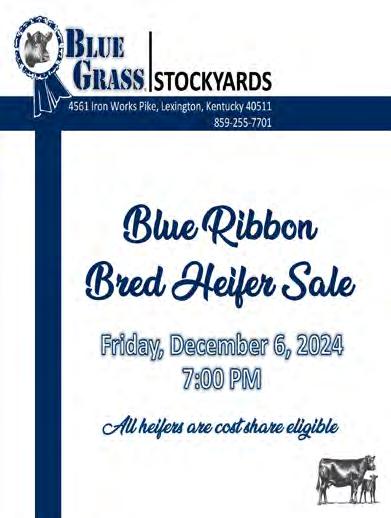
Blue Grass Upcoming Sales
Buffalo Trace Herd Builder Bred Heifer Sale
Farmers Fri, November 1, 2024, 6:30 PM
Equipment Sale
Lexington Sat, November 2, 2024, 9:30 AM
Holstein Sale
Campbellsville Sat, November 9, 2024, 1:00 PM
Next Generation Bred Heifer Sale
South Sat, November 16, 2024, 1:00 PM
Profit Thru Performance Sale
Lexington Wed, December 4, 2024, 6:00 PM
Traditions Hereford Influence Feeder Calf Sale
South—Thur, December 5, 2024, 10:30 AM
Blue Ribbon Bred Heifer Sale
Lexington Fri, December 6, 2024, 7:00 PM
Kentucky Certified Hereford Influence Sale
Lexington Thur, December 12, 2024, 6:00 PM
The Charolais Influenced Feeder Calf Alliance
South Thur, December 12, 2024, 10:30 AM
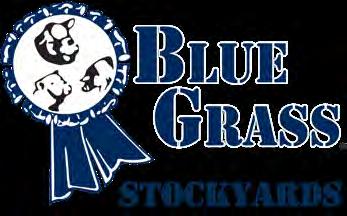
6
18

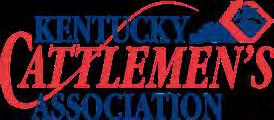
* MEMBERSHIP YEAR 10/1/24– 9/30/25
NAME SPOUSE NAME FARM NAME
*Payments of KCA membership dues are tax deductible for most members as an ordinary and necessary business expense. However, charitable contributions of gifts to KCA are not tax deductible for Federal Income Tax purposes. Due to new IRS regulations, $2.24 of your dues would not be deductible. Approximately $12 of your dues will go towards the monthly publication Cow Country.
PLEASE CHECK THE MEMBERSHIP(S) YOU WOULD LIKE TO JOIN:
KCA MEMBERSHIP ($30/YR) NEW RENEWAL
Membership dues are $30 unless otherwise listed below
KCA COUPLE MEMBERSHIP
To add your spouse, please add $15 to your KCA Membership
KENTUCKY JUNIOR CATTLEMEN’S ASSOCIATION ($10/YR) NEW RENEWAL
I WOULD LIKE ADDITIONAL INFORMATION ON THE YOUNG PRODUCER’S COUNCIL
TOTAL MEMBERSHIP:
$ KCA
$ KJCA
TOTAL CONTRIBUTIONS:
$ CATTLEMEN’S FOUNDATION DONATION (voluntary)
TOTAL AMOUNT ENCLOSED:
$ ALL DONATIONS TO KCF ARE TAX DEDUCTIBLE
COUNTY DUES
Dues are $30 except for the counties listed below.
Allen...............................$40
Anderson........................$25
Bourbon.........................$20
Boyle ..............................$35
Bullitt..............................$20
Butler..............................$25
Franklin ..........................$25
Highlands .......................$20 (Boyd, Johnson, Lawrence, & Martin)
Hopkins ..........................$35
Laurel.............................$35
Louisville Area ................$20 (Jefferson, & Spencer) Magoffin .........................$20 Menifee ..........................$25
Mountain........................$25 (Breathitt, Floyd, Knott, Lee, Leslie, Letcher, Morgan, Owsley, Perry & Wolfe)
Woodford......................$25
IF YOU WOULD ALSO LIKE TO JOIN THE NATIONAL CATTLEMEN’S BEEF ASSOCIATION The NCBA is now a State Marketing Partner with the KCA. You can pay your dues to both organizations with one check, at the same time.
1,001-1,250$1,304 1,251-1,500$1,586 1,501-1,750$1,870 1,751-2,000$2,154 > 2,000$2,154 + $0.4307/HD

Alex Scott Southeast Regional Director of Nutrition
National Diabetes Awareness Month is a time to help people understand the importance of making healthier choices to help lower the number of people with diabetes in our communities. In the U.S., over 38 million children and adults have diabetes – that’s about 1 in every 10 people.1 However, 1 in 5 people don’t know that they have it.1 The good news is that type 2 diabetes can be prevented if we catch signs of prediabetes early and make healthy lifestyle changes. An estimated 98 million American adults – that’s more than 1 in 3 people – have prediabetes.1 If lifestyle changes are made during this stage, type 2 diabetes can be delayed or even prevented. More than 8 in 10 adults that have prediabetes don’t know that they have it.1 This may be because most people don’t usually have symptoms with prediabetes. Talk to your doctor about regularly screening for prediabetes and type 2 diabetes, especially if you have certain risk factors for type 2 diabetes such as being a smoker, overweight or obese, physically inactive, 45 years or older, have high blood pressure, high cholesterol or a family history of type 2 diabetes.2
Protein plays a vital role in managing diabetes by supporting muscle maintenance, promoting healing and helping regulate blood sugar levels. For individuals with diabetes, consuming the recommended amount of protein is essential for preventing muscle loss and aiding in skin healing, which can be critical in avoiding complications such as amputations. Additionally, protein slows down digestion of carbohydrates, which leads to more stable blood sugar levels after meals. However, a recent study found that many people with diabetes are not getting enough protein or are not incorporating it in balanced, healthful ways.5 Including lean beef in a diabetesfriendly diet is an excellent way to meet daily protein needs, offering about 25 grams of high-quality protein in a 3-ounce serving. With its nutrient-dense profile and ability to support muscle maintenance and blood sugar control, lean beef serves as a satisfying and nutritious option for individuals managing diabetes.

The latest research findings confirm that red meats, like lean beef, continue to be part of a healthful diet.3 In fact, following a Mediterranean-style eating pattern that includes fresh, unprocessed lean beef is just as effective at improving risk factors such as blood pressure and total and LDL cholesterol.4 The key is balance –pairing lean beef with fruits, vegetables, and whole grains creates a diabetesfriendly meal that provides essential nutrients while supporting blood sugar control and overall health.
Resources
1. U.S. Centers for Disease Control and Prevention, National Diabetes Statistics Report, 2024. Available at https://www.cdc.gov/ diabetes/php/data-research/index.html
2. U.S. Centers for Disease Control and Prevention, Diabetes Risk Factors, 2024. Available at https://www.cdc.gov/diabetes/riskfactors/index.html
3. Clina, Julianne G., et al. "High-and normal-protein diets improve body composition and glucose control in adults with type 2 diabetes: a randomized trial." Obesity 31.8 (2023): 2021-2030.
4. O’Conner LE, et al. A Mediterranean-style eating pattern with lean, unprocessed red meat has cardiometabolic benefits for adults who are overweight or obese in a randomized, crossover, controlled feeding trial. Am J Clin Nutr 2018, nqy075.
5. Fanelli, Stephanie M., et al. "Low protein intakes and poor diet quality associate with functional limitations in US adults with diabetes: A 2005–2016 NHANES analysis." Nutrients 13.8 (2021): 2582.
Beef’s great versatility means that consumers can find cuts at a variety of price points to fit any budget this holiday.
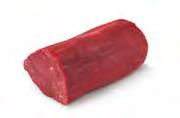
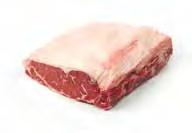


Including beef in a diabetes-friendly diet can be easier than you think. Consider these four tips when planning your meals for yourself or a family member with diabetes.
1. Choose lean cuts off beef. Look for cuts with the words “loin” or “round” in the name like sirloin, tenderloin, or top round steak and choose 90% lean or leaner ground beef. These options are lower in saturated fat, making them better for heart health and blood sugar control.
2. Practice portion control. The recommended portion size of beef is 3.5-ounces, about the size off the palm of your hand or a deck of cards.
3. Pair beef with fiber-rich foods. Choose non-starchy vegetables (such as carrots, broccoli, spinach or green beans) and whole grains as a side to create a balanced meal. Foods rich in fiber help to slow digestion, leading to more stable blood sugar.
4. Cook beef in healthy ways. Cooking methods such as grilling, broiling, baking or poaching help reduce added fats. Avoid deep frying and adding heavy sauces to reduce calories and fat.
Try this Roasted Sun-Dried Tomato Beef Tri-Tip with Peppers and Sweet Potatoes recipe this holiday for a diabetes-friendly dinner! With only 22 carbohydrates, it leaves room for your favorite whole grain or non-starchy vegetable. Add ½ cup of rice, 1 slice of bread, or 1 cup of asparagus to make this a balanced 30 – 45 gram carbohydrate meal with 25 grams of protein.
Tip: When looking at Beef It’s What’s For Dinner. recipes scroll down to the Nutrition section and check the Nutrition Information Per Serving for the total carbohydrate count.
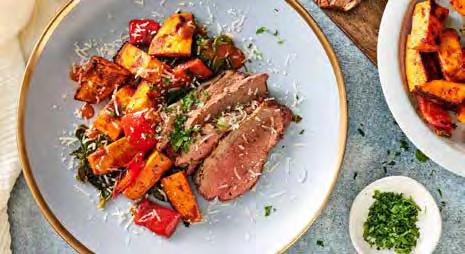
Ingredients: 1 beef Tri-tip Roast (1 1/2 - 2 pounds) • 1/2 cup Italian dressing • 1/4 cup sun-dried tomatoes • 1/4 cup water • 1 1/2 pounds sweet potatoes, cut into 2" pieces • 2 red bell pepper, cut into 2" pieces • 2 tablespoons grated Parmesan cheese • 1 teaspoon salt • 1 tablespoon fresh parsley
Cooking: Preheat oven to 425°F. Place Italian dressing, tomatoes and water in blender or food processor container. Cover; process until smooth. Divide mixture evenly into thirds; reserve 2/3 tomato mixture.
Combine potatoes and peppers and 1/3 tomato mixture in large bowl; toss to coat. Place on rimmed baking sheet lined with parchment. Set aside.
Spread 1/3 tomato mixture evenly onto all surfaces of beef roast. Place roast on vegetables. Do not add water or cover. Roast in 425°F oven 30 to 40 minutes for medium rare; 40 - 50 minutes for medium doneness.
Remove roast when instant-read thermometer registers 135° for medium rare; 150° for medium. Transfer roast to carving board; tent loosely with aluminum foil. Let stand 20 - 25 minutes. (Temperature will continue to rise about 10°F to reach 145°F for medium rare; 160°F for medium) Meanwhile, increase oven temperature to 475°F. Stir vegetables and return to oven for 15 - 20 minutes or until desired doneness.
Carve roast across the grain into slices. Serve with vegetables. Coat all with remaining sauce. Sprinkle with parmesan. Sprinkle with parsley, if desired.

Becky Thompson Director of Kentucky Beef Network
The Kentucky Beef Network and University of Kentucky Extension have successfully concluded the free Beef Quality & Care Assurance enrollment month in September. We appreciate your participation, whether it was through attending an in-person training session at a county extension office, a chute-side session hosted by local county extension and cattlemen’s association groups or completing the training online.
The Beef Quality & Care Assurance program is designed to promote practices that ensure the proper handling and welfare of cattle, prioritize farmer safety and help maintain a healthy beef supply for consumers. This program empowers beef and dairy producers to improve product quality, increase marketability and boost consumer confidence.
If you still need to complete your enrollment, please visit www.kentuckybeefnetwork.com.

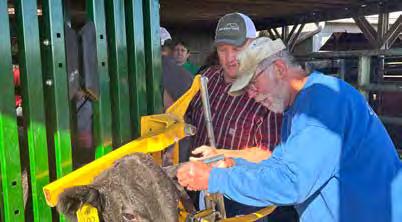


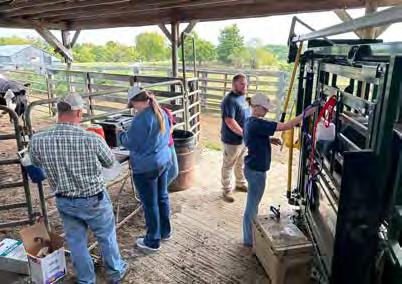


Dan Miller Industry Coordinator, Kentucky Beef Network
For the past 10 years we have been weaning our calves based on the “sign”. Now you may or may not believe that there is a benefit to using this ancient calendar to plan certain procedures, but we have used it successfully, and I do seem to think there is something to it.
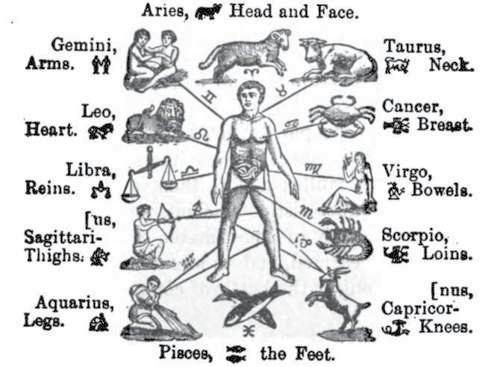
Referred to as “The Zodiac Man” or “Man of Signs”, this idea can be traced back to the 11th century. Medical astrologers of that time believed that there was a correlation to both the heavens and living beings. During the late-medieval period this “rational” idea was built upon the precisely calculable order of the heavens. The theory was that celestial order, in turn, had influence on terrestrial things like weather and the human body. This correlation to the astrological phase to the human body was scripted as The Zodiac Man, corelating each phase to a specific part of the body. It is generally believed to be bad practice to perform any procedure on a part of the body while the sign is in that area. (Yale University Online Exhibits)
So right or wrong, we use the zodiac sign to schedule management events, such as castration and weaning. We only perform these two events when the sign is in the “feet”. A quick reference to the Farmer's Almanac can tell you where the sign is on The Zodiac Man. We weaned our calves on Sept. 13 when the sign was in the “feet”. Weaning went smoothly, and we had hardly any bawling from the calves or cows even on the first night. The transition was smooth and Greg had all the calves eating grain by the third night.
Our weaning weights were down a bit from last year, but we also weaned two weeks earlier than previously. This year's average was 491 lbs. The calves averaged 2.2 lbs. per day of age, and had we kept them on the cow for two more weeks, they would have been within 6 lbs. of last year's average of 528 lbs. That difference is understandable with this summer being much drier than last season.
The cows were in decent shape given the dry pasture conditions. They had an average weight of 1246 lbs., a body condition score of 5.6, and a hair coat score of 2.1. On average the herd weaned 40% of their body weight.
These calves will now get backgrounded at the farm throughout the fall and winter. The females will be managed as replacement heifers, and the steers will get grazed on stockpiled fescue and carried through the winter and then grazed on grass at Eden Shale next summer. Check back for more updates on these calves as we carry them through our management system.
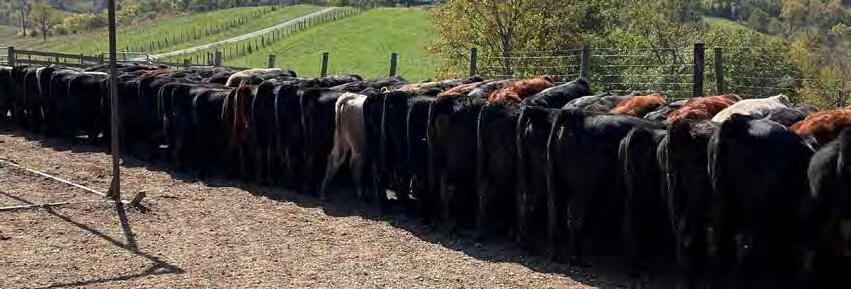


New York City, Washington D.C., Boston, Philadelphia and Hartford are among the major metropolitan cities in the Northeast. Home to nearly 74 million consumers with people outnumbering cattle 16:1, this area, extends from Maine to Virginia. Less than 2.7 percent of total Beef Checkoff assessments are collected within the region, and six of the 12 states do not have a local State Beef Council. So, how does the Beef Checkoff extend beef promotion into the heavily populated Northeast region with limited State Beef Council support? Enter the Northeast Beef Promotion Initiative (NEBPI) as the key to amplifying beef’s presence.
As a subcontractor through Beef Checkoff contractor Meat Import Council of America (MICA), NEBPI is housed within the Pennsylvania Beef Council and builds beef demand in the Northeast metros, covering Connecticut, Delaware, District of Columbia, Maine, Maryland, Massachusetts, New Hampshire, New Jersey, New York, Pennsylvania, Rhode Island, Vermont, Virginia and West Virginia, through supply chain engagement, consumer outreach and work with nutrition experts.
In the early 2000s, the gap between limited Beef Checkoff dollar resources and a growing population of consumers in the Northeast became apparent, creating a clear opportunity to channel nationally collected Beef Checkoff dollars into this region. Here’s how the program got started and evolved throughout the years:
2004
Representatives from various Qualified State Beef Councils (QSBC) and industry organizations in the Northeast joined to discuss the opportunity to initiate a program specifically designed to channel national Beef Checkoff resources to that region.
2005
The first funding was awarded by the Beef Promotion Operating Committee (BPOC).
2012
The first QSBC funding partner invested additional dollars for regional programming efforts.
2015
Additional QSBC partners gathered resources together to further the impact of programming.
2024
During the nineteenth consecutive year executing programming, NEBPI continues to share return-on-investment numbers with six QSBC funding partners and works to meet the needs for beef promotion and education in the Northeast.
1. Connecting with Supply Chain Experts
As the go-to resource for all things beef on the menu and in the meat case, NEBPI collaborates with Northeast retail and foodservice partners. By building relationships with culinary schools, retail and foodservice professionals, e-commerce companies, and by partnering on regional beef campaigns, such as mobile pre-shopping apps, NEBPI ensures a positive beef purchasing experience and drives beef sales.
2. Executing Consumer Outreach
Bridging the gap between Northeast consumers and valuable beef
resources, NEBPI highlights beef’s flavor, nutrient density, versatility and the integrity of cattle producers. NEBPI aims to reach and engage with metro consumers through Beef Checkoff-funded digital campaigns and in-person events, with an increased focus on high school and collegiate athletics.
3. Engaging with Influential Nutrition Experts
To empower health professionals with evidence-based nutrition science, NEBPI builds connections with health professionals and educators, helping them feel confident when recommending beef within their circles of influence. NEBPI grows relationships with key health professionals by hosting qualified speakers to share the science behind beef’s nutritional profile. NEBPI also coordinates engaging immersion events to drive home key beef nutrition messages.
To successfully execute the core program areas, NEBPI must first understand the Northeast consumer and their buying habits. In 2023, the Northeast Dashboard Survey1 revealed important information about the Northeast consumer. Here are key findings for the region:
1. Consumers in the Northeast are actively eating beef, with most (72%) doing so at least once a week, and they are unlikely to change their consumption habits in the future.
2. Consumers in the Northeast seem more nutrition-oriented since their top three consideration factors when choosing a meal with protein are taste, value for money and health.
3. Twenty-nine percent of consumers purchased beef directly from a beef producer at least once. The main driver for those purchases is to receive a better-quality product, followed by the desire to support the local economy.
Consumers across the Northeast region may be motivated to increase their beef consumption if they have access to more recipe ideas and cooking methods, specifically those that are healthy, quick and easy. These consumers express greater interest in knowing where their beef comes from, learning about local beef farmers and ranchers, and receiving nutritional materials and relevant safety information.
Kid friendly beef recipes
Beef cooking instructions & videos
Information about the people who raise beef
Beef safety information (Doneness temps, cook time, handling, storing, thawing)
on local beef producers

Northeast consumer attitudes toward beef as a protein source are more favorable than their attitudes toward production practices. Overall, perceptions are lower than reported nationally, with more negativity towards raising cattle. These perceptions might be lower due to limited knowledge of the production process.

Nearly 30% of consumers have purchased beef products directly from a farm in the Northeast and do so because they believe they receive better-quality products and want to support the local economy.
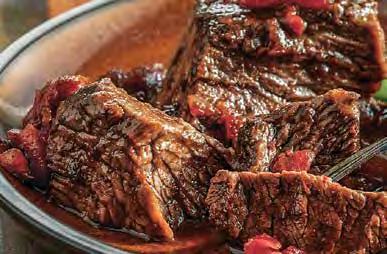

Beef was featured on the Today Show with Hoda and Jenna in their “Today Food” segment. Through a Beef Checkoff-funded partnership with Homemade Cooking, a Passover braised Chuck Eye Roast made its TV debut and affirmed that beef can be affordable and delicious for family holidays. The Today Show has a national TV audience of more than 1.4 million.

Following this survey, NEBPI revealed opportunities for continued success. Beef Checkoff-funded programs will share more quick-andeasy beef recipes, highlight beef’s positive story, show how cattle are raised responsibly and feature the Northeast Beef Directory as a resource for locating local beef producers.
To learn more about NEBPI, visit NEBPI.org

NEBPI got involved with the Penn State Butcher Apprenticeship Program in August and focused on beef carcass breakdown and cutting skills. The NEBPI team leads sessions on beef demand, Beef Checkoff resources and the versatility of beef cuts.


Beef was recognized as the preferred protein of the Pennsylvania State Track & Field Championships. Beef was promoted with samples, recipe inspiration and nutrition information among 2,600 student athletes from 350 schools and 15,000 spectators.

The Beef Promotion and Research Act and Order authorizes Beef Checkoff funds to only be spent in the following program areas: beef promotion, research, consumer and industry information, foreign-market development and producer communications.
Each September, beef industry organizations present proposals – referred to as Authorization Requests, or “ARs” – to the Beef Promotion Operating Committee, comprised of members of the Cattlemen’s Beef Board and the Federation of State Beef Councils, to request funding for year-long marketing, education and research projects in these program areas. Those organizations approved for Beef Checkoff-funded work are referred to as Beef Checkoff contractors.
For FY25, the Beef Checkoff has eight contractors and two subcontractors. The contractors and their programs and projects are approved within each of the program areas for the fiscal year 2025 (October 2024 to September 2025).
Strives for an accurate understanding of the beef industry and helps maintain a positive cattle-marketing climate.
Administers the Veal Quality Assurance (VQA) program and fosters public awareness regarding VQA’s positive impact on animal well-being.
2025 Funding: $60,000
NIAA
Promotes responsible antibiotic use and combats antimicrobial resistance by maintaining consistent scientific collaboration between the animal agriculture and human health sectors.
2025 Funding: $95,000
NCBA
Conveys the message that beef offers unparalleled taste and nutrition while dispelling myths about beef to consumer audiences.
2025 Funding: $2,800,000
Strengthens beef’s image by proactively sharing nutritional data and positive messages with influential stakeholders, including media, food editors, dietitians, physicians and other key figures who shape consumers’ food knowledge.
MICA/NEBPI*
Builds beef consumption in highly populated Northeastern U.S. cities by working with restaurants and grocery store chains, marketing to specific consumer groups and garnering support from regional nutrition influencers. 2025 Funding: $900,000
AFBFA
Provides science teachers with high-quality immersive experiences and materials to teach science through the lens of beef production.
2025 Funding: $600,000
NCBA
Increases consumer awareness of the Beef. It’s What’s For Dinner. brand campaign and positions beef as the number one protein with restaurants, culinary leaders, grocery stores and other markets.
2025 Funding: $6,000,000
Includes advertising, merchandising and new product development as well as training and promotional partnerships with restaurants and supermarkets that stimulate sales of beef and veal products.
MI/ NYBC*
Empowers consumers with innovative approaches to access and purchase veal, elevating their veal-eating experiences through creative meal solutions that maximize taste, value and versatility.
2025 Funding: $220,000
NCBA
Connects directly with consumers to promote beef through the iconic Beef. It’s What’s For Dinner. brand. Through beef marketing and merchandising, Beef. It’s What’s For Dinner. educates and inspires consumers to purchase, prepare and enjoy beef.
2025 Funding: $8,900,000




Provides the foundation for virtually all Beef Checkoff-funded information and promotion by providing science related to beef nutrition, beef safety and pathogen resistance.
MF
Conducts post-harvest beef safety and science-based research on processed beef’s nutritional and health benefits.
2025 Funding: $600,000
Works alongside universities and institutions to conduct high-quality scientific research on beef’s nutritional benefits, providing a sound factual basis to promote beef’s role in a healthy diet.
2025 Funding: $8,000,000
Informs producers and importers about how their Beef Checkoff dollars are invested through a variety of efforts and initiatives.
Communicates to producers where their Checkoff dollars are spent through The Drive newsletter (printed and electronic versions), media relations, attendance at producer meetings, social media and other tactics.
2025 Funding: $1,800,000
Develops international markets for U.S. beef through programs aimed at expanding market penetration, gaining new market access, improving global consumer perceptions and building trust.
Maximizes market access for U.S. beef around the globe, develops demand among new and existing buyers overseas and increases the value of the entire carcass through export support.
2025 Funding: $8,000,000

Foundation for Agriculture
CBB
Cattlemen’s Beef Promotion and Research Board
MF Meat Foundation
MICA Meat Import Council of America
NCBA
National Cattlemen’s Beef Association
NIAA
National Institute for Animal Agriculture
MI
Meat Institute
NEBPI*
Northeast Beef Promotion Initiative
NYBC*
New York Beef


Purchasing Managers from Sam’s Clubs in China Study Korea’s Retail Market
The U.S. Meat Export Federation (USMEF), is working closely with Sam’s Club to help the retailer grow its profitability with U.S. red meat. Already the largest retailer in China for chilled U.S. beef with 48 outlets, Sam’s Club plans to open six or seven new outlets per year. USMEF took representatives on a tour of four retail outlets to demonstrate packaging and merchandising techniques for U.S. beef.
U.S. Beef Introduced to Industry in Ghana, West Africa
In an initial step toward exploring Ghana and the West Africa region’s potential for U.S. beef, USMEF partnered with USDA’s Foreign Agricultural Service and African importer PGL Distribution for an introductory seminar and tasting event at the Polo Club restaurant in Accra, Ghana. USMEF Corporate Chef Germán Navarrete joined USMEF Africa Representative Matt Copeland and USMEF Regional Representative Monty Brown to present a “culinary journey with U.S. beef” to more than 20 guests, including the country’s largest retailer, high-end hotels and restaurants, and high-profile influencers.
USMEF partnered with a foodservice distributor in Mexico to show food lovers how to bring exceptional experiences from top restaurants into their homes. One of Mexico’s premier food events, Sabores Polanco Festival, served as a training ground for participants through a series of masterclasses conducted by leading chefs and hosted by the U.S. beef and pork industries. More than 300 participated in the masterclasses.
The Beef Checkoff recently commissioned a thirdparty independent economic analysis conducted by Dr. Harry Kaiser of Cornell University to thoroughly assess the effectiveness and additional financial benefits produced by the program’s demand-driving activities during 2019-2023. This study’s objectives were to measure:
Whether national Beef Checkoff demand-driving activities increased demand for beef products (domestically and abroad).
The combined benefits of those activities in terms of their incremental financial impact to beef producers and importers.
The indirect benefits of national Beef Checkoff demand-driving activities to the broader macroeconomy.

What were the impacts of the national Beef Checkoff on beef demand2 and for those producers and importers who pay into the program?
For every national Beef Checkoff program dollar invested3 in domestic and export demand-driving activities for the most recent five-year period (20192023), a total financial impact of $13.41 was given back to the producers and importers who pay into the program.
Total domestic beef demand would have been 2.4 billion pounds (8.5%) lower per year than actual results.



$13.41


The steer price would have been 7.8% lower per year than actual results.
U.S. export beef demand would have been 372 million pounds (11.5%) lower than actual results in the seven major importing countries included in the study4 .

What was the direct effect of the national Beef Checkoff to the beef industry?
The study also evaluated the national Beef Checkoff’s direct effect on the beef industry (i.e. producers and importers that pay into the program) and its indirect effects on the broader U.S. economy. To quantify the total revenue impact of the national Beef Checkoff on the beef industry sector, the study utilized the beef demand (8.5%) and U.S. beef export (11.5%) percentages derived from the ROI market simulation analysis. Applying these percentages indicated that the national Beef Checkoff added an incremental $3.3 billion to the beef industry in 2023.
The direct effect of the national Beef Checkoff adding an incremental $3.3 billion to the beef industry sector had positive indirect effects on the broader U.S. economy 5 , including increases in
U.S. employment by almost 47,000 people
U.S. employment income by $2 billion
Total value added to the U.S. economy of $4.1 billion
U.S. GDP by nearly $9.5 billion
3
Furthermore, the national Beef Checkoff contributed to increased tax revenue at the federal, state and local levels, amounting to a grand total of $743 million in 2023, distributed as follows:
$34 million in county tax revenue
$205 million in state tax revenue
$504 million in federal tax revenue
“We’re extremely pleased with the results of this latest study,” said Cheryl DeVuyst of Morrison, Oklahoma, former chair of the Beef Checkoff Evaluation Committee and current secretarytreasurer of the Cattlemen’s Beef Board (CBB).
“The
Beef Checkoff’s
primary goal is to
increase beef demand
here
in the U.S. and worldwide.
The
statistics
uncovered by this study tell us that we’re achieving that goal
and providing producers and importers with an excellent return on their national Checkoff investments.”
To view the full ROI and Economic Impact Studies, visit, www.beefboard.org/ return-on-investment/
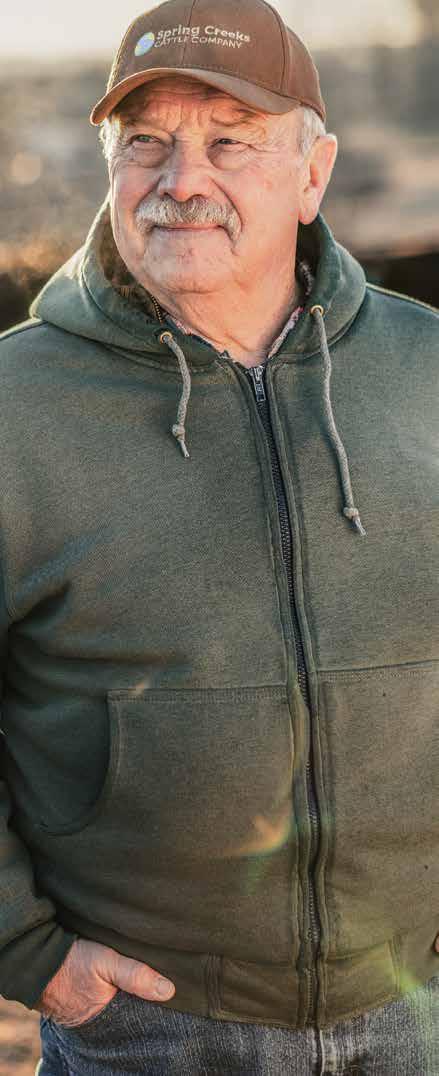



Congratulations to Jan Lyons of Manhattan, Kansas, for receiving the prestigious 2024 Beef Checkoff Visionary Award! This honor recognizes an individual in the beef industry who has shown outstanding support and commitment to the Beef Checkoff’s goals and vision. Hear from Jan and learn about her years of dedication and leadership.
Watch Video:
https://swn.sn/janlyons
The Kansas Beef Council (KBC) hosted an On the Farm STEM training over the summer, bringing 15 Kansas middle and high school teachers together to explore how food and agriculture can be integrated into science education. Teachers were guided through hands-on experiences at Downey Ranch and Tiffany Cattle Company, demonstrating the intersection of STEM principles with modern ranching practices. Teachers learned about technologies like drones, GPS collars, and genetic testing, and received resources to bring these real-world applications into their classrooms. Feedback from the event highlighted a shift in participants’ trust in beef production practices, particularly regarding animal care and technology use, showing the program’s impact on connecting agriculture to scientific learning.
Beef exports totaled 110,155 metric tons (mt) in June, down four percent from a year ago but the second largest monthly export total in 2024.
June export value for beef reached $938.3 million, up three percent year-over-year and the highest since August 2022.
June exports trended higher to Japan and were the third largest on record to Taiwan, while shipments to Canada were the largest in nearly a decade.
Through the first half of the year, beef export value climbed five percent from a year ago to $5.22 billion, despite a 4 percent decline in volume (643,733 mt).




Generally the Buyer is responsible for collecting the Beef Checkoff assessment from the Seller

However, both the Buyer and the Seller are responsible for seeing that the Checkoff is collected and paid. or pays $2 to
QUALIFIED STATE BEEF COUNCIL
Cattlemen’s Beef Board invests in national Checkoff programs, while Kentucky Beef Council invests in state programs.
If you are a producer from one of these seven states - Alaska, Connecticut, Maine, Maryland, Massachusetts, New Hampshire, and Rhode Island - you will remit directly to the Cattlemen’s Beef Board. If you have any questions regarding who is responsible for remitting the Checkoff assessment or how to remit payment, please contact your State Beef Council or the Cattlemen’s Beef Board at (303) 867-6304.
3 Exceptions to Beef Checkoff Collection: 1. Non-producer status: If a person (or company) owns cattle for 10 days or less, purchases the cattle to facilitate the transfer of ownership to a third party, and certifies that any Checkoff dollars due from the previous owner have been collected, then that person qualifies as a “Non-Producer” and the Checkoff assessment is not due when qualified cattle are resold. 2. Organic Exemption: In the 2002 Farm Bill, Congress created a process exemptiing organic producers from paying Checkoff program assessments. 3. Pre-Payment: Producers can also choose to “prepay” the Checkoff assessment when shipping cattle out of state for feeding and still retain ownership on the cattle. This allows the producer to direct half of the $1-per-head national Checkoff assessment to the beef council in the state where the cattle were raised, rather than the state where the cattle will be fed. Note: To claim any of these exemptions, the person selling the cattle must provide the proper ‘document’ to show that the Checkoff assessment is not due at the time of sale. Thus, the rule of thumb for all cattle sales is that the person paying the producer should collect either a “Dollar or a Document.”
LIVESTOCK MARKET - When cattle are sold through a livestock market or video market, the Market collects and remits the Beef Checkoff assessment.
CATTLE DEALER/ORDER BUYER - When cattle are sold to a Cattle Dealer or Order Buyer, the Dealer/Order Buyer collects and remits the Beef Checkoff assessment.
ANOTHER PRODUCER - Both the Buyer and the Seller are responsible for making sure that the Beef Checkoff assessment is collected and remitted. For clarity and consistency, we encourage the Seller to take on this compliance responsibility.
VEAL GROWER - When dairy calves are sold to a Veal Grower, both the Buyer and the Seller are responsible for making sure that the Beef Checkoff assessment is collected and remitted. For clarity and consistency, we encourage the Seller to take on this compliance responsibility.
CATTLE SHOWS AND FAIRS - When producers sell their animals at fairs or cattle shows (4H/FFA shows, Purebred cattle shows, etc.), the Organization that runs the sale collects and remits the Beef Checkoff assessment.
FEEDLOT - When cattle are sold directy to a feedlot, the Feedlot collects and remits the Beef Checkoff assessment.
PACKING PLANT - When cattle are sold to a packing plant, the Packing Plant collects and remits the Beef Checkoff assessment.
DIRECT-TO-CONSUMER BEEF SALES - When producers market their cattle as beef, the Producer is responsible for remitting the Beef Checkoff assessment.
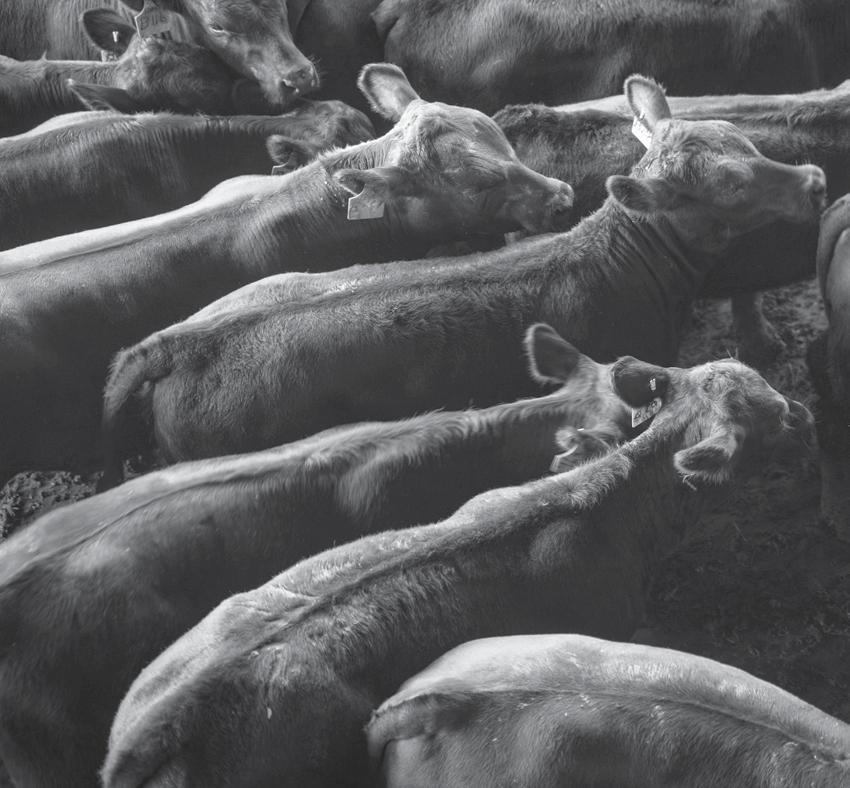
According to the Paperwork Reduction Act of
an agency may not conduct or
person is
to a
it
to
The
for this
of
and
control
OMB control
collection is 0581-0093. The time required to complete this
collection is estimated to average one hour per response, including the time for reviewing instructions, searching existing data sources, gathering and
the
and completing and reviewing the
of
The U.S. Department of Agriculture (USDA) prohibits discrimination in all its programs and activities on the basis of race, color, national origin, age, disability, and where applicable, sex, marital status, familial status, parental status, religion, sexual orientation, genetic information, political beliefs, reprisal, or because all or part of an individual’s income is derived from any public assistance program. (Not all prohibited bases apply to all programs.) Persons with disabilities who require alternative means for communication of program information (Braille, large print, audiotape, etc.) should contact USDA’s TARGET Center at (202) 720-2600 (voice and TDD). To file a complaint of discrimination, write to USDA, Director, Office of Civil


KEVIN AND RACHEL BARRON
Crestwood, Ky
(502) 905-5851
rkbarron812@gmail.com
SWAIN SELECT SIMMENTAL 12113 Green Valley Dr. Louisville, KY 40243


swainselect.com swainselect@gmail.com facebook.com/swainselectsimmental
Fred & Phyllis: 502-599-4560 Chi & Angie: 502-287-2116

JUDY AND RONDAL DAWSON 1156 Buzzard Roost Road Shelbyville, KY 40065 502-593-5136 • jrdawson22@outlook.com

JEROD METZGER • 270-779-6260

ROCKING P LIVESTOCK 8308 Orangeburg Road Maysville, KY 41056
Chan: 606-584-7581
Keith: 606-584-5626
rockingplivestock@maysvilleky.net
BRIAN & HEATHER SWAIN 3906 Pottertown Road Murray, KY 42071 • 270-293-4440
wksbswain@murray-ky.net


SIMMENTAL AND SIMANGUS BULLS FOR SALE
1939 Huntertown Road
Versailles, KY 40383
BULLS FOR SALE
Chris Allen 859-351-4486 callenuky@hotmail.com
Dr. Henry Allen 859-229-0755


Simmental calves are champions of the scale.
They reliably outperform straightbred calves in the feedyard — with better growth, better structure and fewer health problems.
They add pounds without sacrificing marbling, and they come with the IGS Feeder Profit Calculator,™ which factors genetics, health and management into true value.
Want low-risk, high-potential calves with earning capability?
406-587-4531 • simmental.org

BRET AND LAURA JACKSON 859.533.3718 or 859.707.7200
BRET & LAURA JACKSON Paris, Kentucky (859) 533-3718 (859) 707-7200
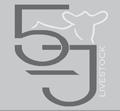
BOYD BEEF CATTLE
6077 Helena Road
Mayslick, KY 41055
Charlie Boyd II: (606) 584-5194
Blake Boyd: (606) 375-3718 www.boydbeef.com cboyd2@maysvilleky.net
BURTON & SONS ANGUS
Joe D. or Karen Burton
BOYD BEEF CATTLE 6077 Helena Road Mayslick, KY
Secretary/Treasurer:

BRANCH VIEW ANGUS
927 Old Liberty Pike • Hustonville, KY 40437 (859) 238-0771 • www.branchviewangus.com
927 Old Liberty Pike • Hustonville, KY 40437 (859) 238-0771 • www.branchviewangus.com

480 Hominy Hill Rd. Nancy, KY 42544
Joe: (606) 305-3081
Located 15 miles West of Somerset • klburton01@windstream.net
Bulls & females sold private treaty. Inquiries Welcome. Sell only what we would buy. Data driven since 1981.
FALL CREEK ANGUS
448 Corder Farm Road
Monticello, KY 42633
Ronnie Corder (606) 348-6588
HILL VIEW FARMS
Jimmy Gilles
5160 Lee Rudy Road
Owensboro, KY 42301 (270) 929-5370 jcgilles86@gmail.com
OLD BARK FARM
370 Ferrill Hill, Buffalo, KY 42716
Kenley Conner (502) 905-7825
Registered Angus Cattle
ST. CLAIR FARMS REGISTERED ANGUS
Eric & Sherry St. Clair
13433 Falls of Rough Road Falls of Rough, KY 40119
Home: (270) 257-2965 • Cell: (270) 617-1079 www.stclairangus.com
Performance Tested Bull & Female Sale April 2020

TWIN CREEK FARM
HILL VIEW FARMS
Shawn, Melissa, Devin & Dylan Gibson (270) 337-3072 or (270) 692-5304 Dennis & Emily 270/337-2128 or 270/402-4338
Jimmy Gilles 5160 Lee Rudy Road Owensboro, KY 42301 (270) 929-5370 jcgilles86@gmail.com

42301 (270) 929-5370 jcgilles86@gmail.com

James S. & LuAnn Coffey, Donald & Donna Coffey
Annual Production Sale- 2nd Saturday in April
James S. & LuAnn Coffey, Donald & Donna Coffey Annual Production Sale- 2nd Saturday in April

COFFEY ANGUS FARMS
BURKS CATTLE CO. 531 Rick Rd. Park City, KY 42160
661 Hopewell Road Liberty, KY 42539
Eddie Burks • (270) 991-6398 www.burkscattle.com
Matt Coffey: (270) 799-6288
Dewey Coffey: (606) 706-2699
BURTON & SONS ANGUS
Genetics for Maximum Profitability since 1984
Joe D. or Karen Burton
480 Hominy Hill Rd. Nancy, KY 42544
Joe: (606) 305-3081

Located 15 miles West of Somerset • klburton01@windstream.net
Bulls & females sold private treaty. Inquiries Welcome. Sell only what we would buy. Data driven since 1981.
GREAT MEADOWS ANGUS ASSOCIATION
COFFEY ANGUS FARMS
661 Hopewell Road Liberty, KY 42539
Dale Brown, President 292 Pea Ridge Road Stamping Ground, KY 40439 859-940-8437 www.greatmeadowsangus.com
Matt Coffey: (270) 799-6288
Dewey Coffey: (606) 706-2699

Genetics for Maximum Profitability since 1984
DAVIS BEND FARMS
LYNN CREEK FARMS
2315 Davis Bend Road Canmer, KY 42722
Kris and Sara Lynn 2184 Bardstown Rd Springfield KY 40069 573-721-6663
timmothyljeffries@gmail.com www.davisbendfarms.com Tim: (270) 528-6605 • Leslie: (270) 528-6435

FALL CREEK ANGUS
APS ANGUS
448 Corder Farm Road Monticello, KY 42633
Ronnie Corder (606) 348-6588
4040 Taylorsville Rd Taylorsville, KY 40071
Gordon Schubert
502-477-2637 • 502-548-8440
HAMILTON ANGUS FARMS

Anne Patton Schubert
502-477-2663 • 502-548-2359
Eddie Hamilton 2142 Stilesville Road Science Hill, KY 42553 edjohami@aol.com (606) 271-1286 Bulls and Females for Sale
TRIPLE D ANGUS
Nathaniel & Darla Denham
HERITAGE FARM

Nathaniel(Bub), Sarah, Ashley Denham (606) 423-2457 • (606) 875-0780 tripledangus.com
Tom McGinnis 1024 Hinkle Lane • Shelbyville, KY (502) 633-1634, home • (502) 633-5100, work (502) 655-0164, cell
PLEASANT HILL FARMS
PLEASANT HILL FARMS
Gil, Mary, Corbin, Caroline, and Catherine Cowles 500 Rockfield Richpond Road Rockfield, KY 42274 (270) 843-9021 • Fax (270) 843-9005
Gil, Mary, Corbin, Caroline, and Catherine Cowles 500 Rockfield Richpond Road Rockfield, KY 42274 (270) 843-9021 • Fax (270) 843-9005 Located 7 miles west of Bowling Green, 1/2
BURKS CATTLE CO. 531 Rick Rd. Park City, KY 42160
JOHNSON FARMS ANGUS
Angus Bulls & Females Slaughters, KY
Keith: (270) 635-0723
Eddie Burks • (270) 991-6398 www.burkscattle.com
Reese: (270) 635-1137
LYNN CREEK FARMS

DUTCH CREEK ANGUS FORAGE GENETICS
Kris and Sara Lynn 2184 Bardstown Rd Springfield KY 40069 573-721-6663
Doug and Susan Schlosnagle (502) 706-0008 DutchCreekAngus.om
MT. MORIAH ANGUS FARMS
Bob, Kathy, Rob, and Janna Clark (859) 748-5558 1446 Kennedy Bridge Rd. Harrodsburg, KY 40330 Bob: (859)339-2610 • Rob: (859)612-1594 mtmoriahfarms1@gmail.com www.mtmoriahangus.com
HERITAGE FARM
Tom McGinnis
1024 Hinkle Lane • Shelbyville, KY (502) 633-1634, home (502) 633-5100, work (502) 655-0164, cell
FOUR KINGS ANGUS
250 Bright Leaf Dr. • Harrodsburg, KY 40330
Cary & Kim King Carymking@yahoo.com • fourkingsangus.com

Jacob
Owner-Operator (859) 583-7134 jacob.tamme@gmail.com www.tammevalley.com

Cary Cell: (859) 613-3734 • Colby Myers - Purebred
MT. MORIAH ANGUS FARMS
OLD BARK FARM
370 Ferrill Hill, Buffalo, KY 42716
Kenley Conner (502) 905-7825
Registered Angus Cattle
Bob, Kathy, Rob, and Janna Clark (859) 748-5558 1446 Kennedy Bridge Rd. Harrodsburg, KY 40330 Bob: (859)339-2610 Rob: (859)612-1594 mtmoriahfarms1@gmail.com www.mtmoriahangus.com
Nathaniel(Bub), Sarah, (606) 423-2457 • (606) tripledangus.com

TWIN CREEK FARM Shawn, Melissa, Devin (270) 337-3072 or (270) Dennis & Emily 270/337-2128 or 270/402-4338
SMITHLAND ANGUS FARM
4437 East Hwy 80 Russell Springs, KY 42642
4040 Taylorsville Rd Taylorsville, KY 40071 Gordon Schubert 502-477-2637 • 502-548-8440 Anne Patton Schubert 502-477-2663 • 502-548-2359
Henry Bryan, Melissa, Bryanna and Blane Smith 606-271-7520 bmsmith@duo-county.com
WHITE FARM
Tim and Amy White 3664 Military Pike Lexington, KY 40513
Home: (859)223-0326
Tim: (859) 509-5401 Amy (859)227-2552 whitefarm4@twc.com

Located 7 miles west of Bowling Green, 1/2 mile off Hwy 68/80


Shayna Gibson, Secretary/Treasurer
www.kentuckyangus.org • kyangusassociation@gmail.com • @kyangusassoc • @kyangusassoc • @kyangusassociation
The 10 producers who registered the most Angus beef cattle in the state of Kentucky recorded a total of 1859 Angus with the American Angus Association® during fiscal year 2024, which ended Sept. 30, according to Mark McCully, Association chief executive officer.
The 10 top recorders in Kentucky are: Branch View Angus, Hustonville; Four Sons Farm, Cynthiana; Oak Hollow, Smiths Grove; Jere L & Mary J Cannon, Flemingsburg; Stone Gate Farms, Flemingsburg; Woodall Angus Farm, Quality; Boyd Beef Cattle, May’s Lick; AdamLeigh Farm, Somerset; Ford Farms, Franklin; Gil Ray Cowles, Rockfield.
Angus breeders across the nation in 2024 registered 302,716 head of Angus cattle. “Our Association members lead the industry in adopting new technology and breeding the most problem-free cattle for their customers,” McCully said. “Cattlemen across the country continue to find registered Angus seedstock are the most profitable option for their herd.”
ANGUS MEANS BUSINESS. The American Angus Association is the nation’s largest beef breed organization, serving nearly 22,000 members across the United States, Canada and several other countries. The Association provides programs and services to farmers, ranchers and others who rely on Angus to produce quality genetics for the beef industry and quality beef for consumers. For more information about Angus cattle and the Association, visit www.ANGUS.org.
AA LAND & CATTLE
Joe Piles, President............................................................................................................................(502) 507-3845
Registered Gelbvieh & Balancers
LARRY CLARK & SONS LLC
Johnnie Moore, Vice President...........................................................................................................(270)
Registered Gelbvieh Cattle
Cynthiana, KY
Pat Tilghman, Secretary/Treasurer.......................................................................................................(270)
Luke Arthur (859) 298-8323 luke.arthur93@gmail.com
Bulls • Show Prospects • Embryos Bulls sell with GE EPD’s • Show Prospects
BAR IV LIVESTOCK
106 Clark Houk Road • Greensburg, KY 42743
Larry Clark, Owner & Operator (270) 299-5167 • (270) 405-6848
Lpclarkandsons@msn.com
Barry, Beth & Ben Racke • Brad Racke • 7416 Tippenhauer Rd. • Cold Spring, KY 41076 Phone (859) 635-3832 • Barry cell (859) 991-1992 • Brad cell (859) 393-3677 • Ben cell (859) 393-3730 Fax (859) 635-3832 • bar4@twc.com
Barry, Beth & Ben Racke • Brad Racke 7416 Tippenhauer Rd. • Cold Spring, KY 41076
Phone (859) 635-3832 • Barry cell (859) 991-1992
Brad cell (859) 393-3677 • Ben cell (859) 393-3730 Fax (859) 635-3832 • bar4@twc.com
Niles & Betty K Bray • 1568 Bray Ridge Road Bedford, KY 40006 • (502) 255-3584

CLIFFORD FARMS
3459 KY HWY 1284E
Cynthiana, KY 41031 Since 1937 (859) 234-6956
BRIAN W. DYER, DVM
CD FARMS
BEE LICK GELBVIEHS
Eddie Reynolds
277 Old Bee Lick Rd. Crab Orchard, KY 40419 606-379-2281(H) 606-305-1972(C)
Clayton & Debbie Cash 1214 Ottawa School Road • Brodhead, KY 40409 (606)-308-3247 • (606)-758-8994
Bulls & Females for sale
Owner/Manager
GELBVIEH/BALANCERS
2050 Glasgow Road Burkesville, KY 42717
Gelbvieh-Balancer Bulls & Heifers For Sale by Private Treaty
Brian, Lauren, Kristen Barry, Emily & Julia (270) 864-5909
GELBVIEH/BALANCERS

Owner/Manager
2050 Glasgow Road • Burkesville, KY 42717
Brian, Lauren, Kristen Barry, Emily & Julia
MURLEY FARMS
REGISTERED GELBVIEH & BALANCER CATTLE
CD FARMS
Specializing in Red Genetics
Clayton & Debbie Cash 1214 Ottawa School Road Brodhead, KY 40409 (606)-308-3247 • (606)-758-8994
Jonathon & Breanna Murley • (270) 427-7727
Gelbvieh-Balancer Bulls & Heifers For Sale by Private Treaty
GELBVIEH BULLS & FEMALES FOR SALE 1012 Shelby Road • Salem, KY 24078 Thad Padon (270) 836-5518
Gary & Pat Tilghman • Carrie & Daryl Derossett Family • Lindsey & Garland Gilliam Family 690 Lick Branch Road Glasgow, KY 42141 270.646.7024 • pleasantmeadowsfarm@hotmail.com
Saturday May 15
Kentucky Junior Gelbvieh Show & Learning Clinic

McIntosh Brothers Farm • 3348 Frankfort Road • Georgetown 10AM Learning Clinic • 12:30PM Show
R&D
Call William McIntosh for more information. (502) 867-3132
AA LAND & CATTLE
GELBVIEH & BALANCERS PO Box 781 • Eddyville, KY 42038 (270) 601-6830 • rdowenfarms.com • sales@rdowenfarms.com
Friday May 28 - May 30
Registered Gelbvieh & Balancers Cynthiana, KY Luke Arthur (859) 298-8323 luke.arthur93@gmail.com
AGJA Eastern Regional Junior Show “Run for the Roses”
LARRY CLARK & SONS LLC
Burley Fields Livestock Center • 709 Oil Fields Road • Horse Cave
Bulls • Show Prospects • Embryos
Bulls sell with GE EPD’s • Show Prospects
Registered Gelbvieh Cattle 106 Clark Houk Road • Greensburg, KY 42743
Casey Wright, Owner 2665 Poplar Corner Road • Lebanon, Kentucky 40033 270-692-7496 * donewrightcattle@hotmail.com
Call Carrie Derossett for more information. (270) 404-0828 Entry and room information available at www.gelbvieh.org (Juniors/Regional Shows/AGJA Eastern Regional)
Barry, Beth & Ben Racke
Brad Racke 7416 Tippenhauer Rd.
Larry Clark, Owner & Operator (270) 299-5167 • (270) 405-6848 Lpclarkandsons@msn.com
BREEDING RED & BLACK POLLED GELBVIEH SINCE 1982
Cold Spring, KY 41076 Phone (859) 635-3832 • Barry cell (859) 991-1992
David, Jerri & Jon David: 162 Hastings Ln • Fredonia, KY 42411 (270) 556-4259 Arthur & Joyce Slaughter 19068 Marion Rd • Fredonia, KY 42411 (270)545-3455
(859) 635-3832
cell (859) 393-3730
FULL CIRCLE FARMS REGISTERED GELBVIEH CATTLE
Brad Burke: 989 Metcalfe Mill Rd, Ewing, KY 41039 (H) 606-267-5609 (C) 606-782-1367 gbb789@windstream.net
EASTERN NATIONAL GELBVIEH SHOW
North American International Livestock Expo, Louisville, Kentucky Junior Show - Sunday, November 17 •




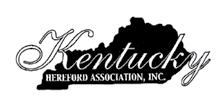
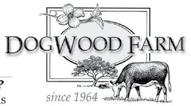
Toby & Debby Dulworth 2492 S. Kirkman Road LaCenter, KY 42056 (270) 224-2993 • dogwood@brtc.net Herefords that thrive on forages. www.dogwoodherefords.com

HEREFORDS
Codee Guffey • 1815 Grassy Springs Road Versailles, Kentucky 40383 (502) 598-6355 rockridgeherefords@gmail.com www.rockridgeherefords.com
Tony & Kathy Staples
992 Knotts Road Brandenburg, KY 40108 (270) 945-9277 (270) 422-4220 tstaples@bbtel.com
Registered Polled Herefords
HANSELL PILE, JR.
12045 St. John Rd. Cecilia, KY 42724
270-735-5192
12 miles West of Elizabethtown

Shannon, Kerry, Emily, Will & Ellie Morgan 13095 Scottsville Rd, Alvaton, Kentucky 42122
www.morganandmorganpolledherefords.com
Shannon: (270) 320-2389
KHA Autumn Sale December 7, Blue Grass Stockyards Lexington
Kentucky Beef Expo Schedule
Kentucky Certified Hereford Influenced Feeder Calf Sale December 12, Blue Grass Stockyards, Lexington
Friday March 1st - Hereford Show - 1pm

Saturday March 2nd - Hereford Sale - 1pm
Sunday March 3rd - Open Junior Show - 8am
Polled Herefords 439 Flatwoods Frozen Camp Rd, Corbin KY 40701
Bobby & Brenda Wells (606) 344-0417 wells_farm@yahoo.com
Kevin, Angela, Kenlea & Kyler Murray (606) 528-1691 or (606) 682-8413
Toby & Debby Dulworth 2492 S. Kirkman Road LaCenter, KY 42056 (270) 224-2993 dogwood@brtc.net
Herefords that thrive on forages. www.dogwoodherefords.com

6077 Helena Road
6077 Helena Road
Mayslick, KY 41055
Charlie Boyd II 606-584-5194
Mayslick, KY 41055
Charlie Boyd II 606-584-5194
Annual Bull Sale second Saturday in March Hereford and Angus Bulls
Annual Bull Sale second Saturday in March Hereford and Angus Bulls
Hereford Farms
Brad, Carla, Clay & Clint Chambliss 1101 Driftwood Lane
Elizabethtown, KY 42701
Home (270) 982-3905
Cell (270) 668-7126 fax 270-735-9922
www.chamblissherefordfarms.com
Brad, Carla, Clay & Clint Chambliss 1101 Driftwood Lane Elizabethtown, KY 42701 Home (270) 982-3905 Cell (270) 668-7126 fax 270-735-9922 www.chamblissherefordfarms.com
Registered Polled Herefords Bulls & Females for sale
WCN Polled Herefords
Since 1961
Tim & Peggy Wolf 12939 Peach Grove Road Alexandria, KY 41001 Home: 859-635-0899
Bill Norris 2220 Celina Road
Burkesville, KY 42717
Phone (270) 433-7256
Cell: 859-991-3484
Cell (270) 433-1525
“Every calf needs a white face”

Peyton’s Well Polled Herefords The Lowell Atwood Family 133 Edgewood Drive • Stanford, KY (606) 365-2520 home/fax (606) 669-1455 cell
Victor- influenced cattle
WELLS FARM Polled Herefords 439 Flatwoods Frozen Camp Rd, Corbin KY 40701
KHA OFFICERS
Dale Stith 5239 Old Sardis Pike Mays Lick, KY 41055 dalestith@yahoo.com (918) 760-1550
Bobby & Brenda Wells (606) 523-0569 or (606) 344-0417 wells_farm@yahoo.com
Kevin, Angela, Kenlea & Kyler Murray (606) 528-1691 or (606) 682-8413

Registered Polled Herefords
PAUL L. HANCOCK 8559 KY 56 Owensboro, KY 42301 270-771-4194
Registered Polled Herefords PAUL L. HANCOCK 8559 KY 56 Owensboro, KY 42301 270-771-4194

President: Chris Hopper 606-584-7842
Secretary/ Treasurer: Melinda Watson 859-625-8660 melindawatson8660@gmail.com
NJB Limited
Dale Stith 5239 Old Sardis Pike Mays Lick, KY 41055
dalestith@yahoo.com (918) 760-1550
Melinda Watson • 859-625-8660 melindawatson8660@gmail.com
K3 CATTLE REGISTERED HEREFORDS KYLE BUSH
K3 CATTLE REGISTERED HEREFORDS
KYLE BUSH K3CATTLE@YAHOO.COM 859-588-4531
K3CATTLE@YAHOO.COM 859-588-4531 198 HICKS PIKE CYNTHIANA, KY 41031
198 HICKS PIKE CYNTHIANA, KY 41031

Polled Hereford and Gelbvieh Cattle 3459 KY Hwy. 1284 E. Cythiana, KY 41031 (859) 234-6956
Polled Hereford and Gelbvieh Cattle 3459 KY Hwy. 1284 E. Cythiana, KY 41031 (859) 234-6956
Ben, Jane, Shelby and Lincoln
Ben, Jane, Shelby and Lincoln
Codee
Versailles, rockridgeherefords@gmail.com www.rockridgeherefords.com
Tony 992
Brandenburg, tstaples@bbtel.com
Jackson Farms
Jackson Farms
Registered Polled Herefords PO Box 215 Cross Plains, TN 37049 615-478-4483
Registered Polled Herefords PO Box 215 Cross Plains, TN 37049 615-478-4483
billymjackson@aol.com
billymjackson@aol.com
“Farming the Same Land Since 1834”
“Farming the Same Land Since 1834”

Eric & Ronnie Thomas 2396 Union City Rd. Richmond, KY 40475 (859) 623-5734
Eric & Ronnie Thomas 2396 Union City Rd. Richmond, KY 40475 (859) 623-5734
Eric’s Cell (859) 314-8256
Eric’s Cell (859) 314-8256
“Cattle for sale at all times”
“Cattle for sale at all times”

Jackie D. Perkins II 367 Mt. Pisgah Rd. Bremen, KY 42325 (270) 543-3586
Jackie D. Perkins II 367 Mt. Pisgah Rd. Bremen, KY 42325 (270) 543-3586
Breeding to produce good cows since 1981
Breeding to produce good cows since 1981

Registered HANSELL 12045 Cecilia, 12 miles
BECKLEY HEREFORDS
BECKLEY HEREFORDS
Registered Polled Herefords Bulls & Females for sale
Tim & Peggy Wolf
12939 Peach Grove Road
L. Wayne Beckley • 1420 Fitchburg Rd. Ravenna, KY 40472 • 606-723-3021 Cell: 859-779-0962
Alexandria, KY 41001
Home: 859-635-0899
Cell: 859-991-3484
L.W. Beckley D.V.M 284 Pyrse Lane • Irvine, KY 40336 Cell: 859-779-1419 • Clinic: 606-726-0000 www.beckleyherefords.com

“Breeding Polled Herefords for over 58 Years”
L. Wayne Beckley • 1420 Fitchburg Rd. Ravenna, KY 40472 • 606-723-3021 Cell: 859-779-0962
L.W. Beckley D.V.M
Tucker Stock Farms
284 Pyrse Lane • Irvine, KY 40336
Cell: 859-779-1419 • Clinic: 606-726-0000
www.beckleyherefords.com
Breeding cattle for sale at all times. 1999 Walnut Hill Rd. Lexington, KY 40515 (859) 271-9086 cell (859)533-3790

LAND & CATTLE
Matt, Melinda, Harlee, & Wyatt Watson 6196 Mount Sterling Rd Flemingsburg, Kentucky melindawatson8660@gmail.com - 606-748-1600 Melinda - 859-625-8660
CATTLE FOR SALE AT ALL TIMES
“Breeding Polled Herefords for over 58 Years” Breeding cattle for sale at all times.
“Registered Angus and Polled Herefords”
1999 Walnut Hill Rd.
Lexington, KY 40515 (859) 271-9086 cell (859)533-3790
John Tucker II 1790 Hidden Valley Lane Hudson, KY 40145 270-617-0301
“Bulls always for Sale”

Tucker and 1790
NOV 1 Maternal Solutions Bull and Female Sale McEwen, TN
NOV 1Buffalo Trace Bred Heifer Sale Flemingsburg, KY 47
NOV 1-2GENEPLUS Sale Concord, AR
NOV 2 TJB Gelbvieh and Balancer Annual Bull Sale Chickamauga, GA
NOV 2 Red Reward Fall Edition Bull and Female Sale Osceola, MO
NOV 2 Burns Farms Bull and Commercial Female Sale Pikeville, TN
NOV 2 Equipment Sale at Blue Grass Stockyards Lexington, KY47
NOV 4 Bourbon County Elite Bred Heifer Sale Paris, KY
NOV 7-21
North American International Livestock Exposition Louisville, KY
NOV 9Holstein Sale Campbellsville, KY 47
NOV 9 Gibbs Farms Bull and Replacement Female Sale Ranburne, AL
NOV 14Circle G Ranches Bull Sale Adel, GA
NOV 16Next Generation Bred Heifer SaleStanford, KY47
NOV 16 Middle Tennessee Hereford Association Fall Sale Cross Plains, TN21
NOV 17-18Eastern National Gelbvieh ShowLouisville, KY66
NOV 23 West Kentucky Select Bred Heifer Sale Guthrie, KY8
NOV 23BoPat Farms Annual Bull SaleBradford, TN23
NOV 29 Heritage Farm Annual Production Sale Shelbyville, KY3
NOV 30 Breeding for the Future Bull and Female Sale Rockfield, KY21
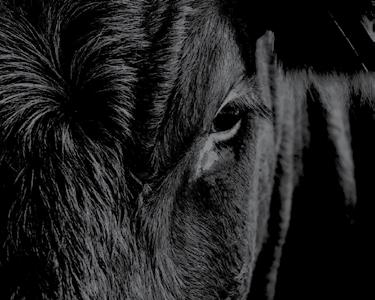
DATEEVENT LOCATION AD
NOV 30Boys from the South Bull SaleLebanon, TN15
DEC 4 Profit through Performance Feeder Sale Lexington, KY47
DEC 5CPH-45 Sale Owensboro, KY11
DEC 5Traditions Hereford Influence SaleStanford, KY47
DEC 6 Knoll Crest Farm Total Performance Bull Sale Red House, VA2
DEC 6Blue Ribbon Bred Heifer SaleLexington, KY47
DEC 7 Kentucky Hereford Association Autumn Sale Lexington, KY67
DEC 7 Heartland Highland Fall Cattle Auction Springfield, MO14
DEC 7 Uwharrie Ridge Farms Production Sale Denton, NC9
DEC 10CPH-45 Sale Guthrie, KY11
DEC 12 Kentucky Certified Hereford Influence Feeder Sale Lexington, KY47
DEC 12Charolais Influenced Feeder Calf SaleStanford, KY47
DEC 14Christmas Pony Sale Lexington, KY
JAN 16-17 -KCA Convention and Ag Industry Trade Show Owensboro, KY13
FEB 4-6Cattle Con 2025 San Antonio, TX7
FEB 20CPH-45 Sale Owensboro, KY11
FEB 24 Woodall Angus Farm 30th Annual Sale Quality, KY19
MAR 1-2Kentucky Beef Expo Louisville, KY
MAR 8Bluegrass Gelbvieh Alliance SaleLexington, KY
APR 12 Knoll Crest Farm Spring Bull and Female Sale Red House, VA
DIAMOND J SALERS
Donald Johnson • 11660 N. Hwy 1247 • Eubank, KY 42564 606-379-1558
DIAMOND J SALERS
WILLIS FARMS
Donald Johnson • 11660 N. Hwy 1247 • Eubank, KY 42564 606-305-8747
Danny Willis • 964 Johnson Rd • Frankfort, KY 40601 • 502-803-5011 drwc21@aol.com • Purebred + Optimizer Breeding bulls & Heifers for sale.
DEL-SU FARM
WILLIS FARMS
Howard & Sue Edwards • 420 Rose Rd • Somerset, KY 42501 606-679-1675 • Jeriah Privett • 606-416-1154
Danny Willis • 964 Johnson Rd • Frankfort, KY 40601 502-803-5011 • drwc21@aol.com
KNOB LICK FARM - BULLS & HEIFERS FOR SALE
Larry Cox • Tina Cox-Lynch • Amanda Cox Gibson • 1315 Knob Lick Road • Irvine, KY 40336 • 606-723-3077 • 606-975-1716
FOUR WINDS FARM N ew Castle, Kentucky (502) 296-1044
PERFORMANCE TESTED PUREBRED ANGUS
BULLS FOR SALE Call 270-202-7186 for more info or check out www.oakhollowangus.com for current availability.
POLLED HERFORD BULLS FOR SALE
19–20-month-old Polled Hereford bulls. Good selection. Low birthweight, medium frame. Free Delivery Available.JMS Polled Herefords, Knifley, KY Danny 270-566-2694 Trent 270-566-2000
RED FULLBLOOD LIMOUSIN
BLACK PUREBRED LIMOUSIN
For sale year-round at farms Cows, bulls, heifers and semen A C H Holdings, Bowling Green, KY Stephen Haynes 270-799-8685
REGISTERED BLACK SIMMENTAL BULLS
Many blaze faced. Excellent EPD’s. Semen Tested. Delivery Available. Maximize your profit with proven performance. All bulls qualify for new CAIP cost-share. Adam Wheatley 502349-2665
BREEDING AGE HEREFORD BULLS FOR SALE AT ALL TIMES Over 60 years of Line 1 Hereford Genetics. Groups of open and bred heifers available for sale at all times. Chambliss Hereford Farms. 270-668-7126
RED ANGUS, SIMANGUS, CHAROLAIS, ANGUS FOR SALE Red Hill Farms, Lafayette, TN, 615-666-3098 Bart, Sarah and Ty Jones
Gordon and Susan Jones, 270-991-2663
Visit us online - www.RedHillFarms.net
Contact us for cattle and semen availability. Annual Production Sales: More Than a Bull Sale – 3rd Saturday in March • Maternal Monday – 3rd Monday in May • Bulls & Females of Fall Sale – Last Saturday in October
RED BARN NOVEMBER -DEALS
Artex manure spreaders- IN STOCK
TMR mixers in stock
Zero down $$$$ for 11 months
Meyer 4618- super clean $26,500
NH 100 TL- cab loader- 2wd-$28,000
JD 567- string -$19,995
New Holland BR 7060-string - $11,995
Farmco feeders- in stock
JD 5420- 4wd canopy- loader $26,500
JD 6715- 2wd canopy- 16 PS- $$$$
Call Charlie for a hot deal today!!!!
859-608-9745
HOOVER NO DOUBT REGISTERED ANGUS YEARLING BULLS 12 available • Excellent EPDs • Docile, Genomic Tested. Contact Triple P Angus, 606-724-5524 or 606-407-2355
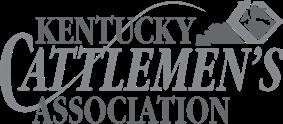

Kevin Laurent Extension Specialist, Department of Animal and Food Sciences, University of Kentucky
The West Kentucky Select Bred Heifer Sale will be celebrating its 25th Anniversary Sale on Nov. 23 at KY-TN Livestock Market in Guthrie. To commemorate this milestone, I thought it would be appropriate to share a few observations and a little history of the sale. First the history. Back in the late 1990’s when Roy Burris gave me the charge of starting a bred heifer sale in Western Kentucky, I knew this could be quite the challenge. Several attempts had been made to start commercial bred heifer sales on our end of the state and none had gained any traction. We sought advice and input from several sources. One being Glen Mackie, extension agent from Bourbon County, who at the time was working with the well-established Elite Heifer Sale at Paris, and his input was invaluable. As we began to plan the sale, Dr. Burris was of the opinion if we could just find the right consignors who not only had quality cattle, but most importantly were committed to buyer satisfaction and long-term success of the program, we could make this work. Enter Paul Beauchamp and Ova Alexander. Beauchamp and Alexander were well respected Beefmaster and Angus breeders from Breckinridge County and had a long history and relationship with Dr. Burris and UK Extension. Paul and Ova took a leap of faith and were the major consignors that first year. That first
sale held in November 2000 sold 112 head for an average price of $968. The following year, Mr. John Bartee, county agent in Montgomery County, Tennessee, brought in another key consignor from “south of the border” in Sammy Bryant of Bryant Brothers Farm in Adams, Tennessee. Both of these consignors became vital fixtures in the sale and over the years have served as examples of producers who are committed to quality cattle and customer satisfaction. The final piece of the puzzle that helped establish the sale was the unwavering support of Mark Barnett and KY-TN Livestock Market. With any special sale, whether it be feeder cattle or bred heifers, if the stockyard is not behind the effort, it will not survive. From the very beginning and through the years I never had to question the support from the Barnett family and KY-TN Livestock.
A lot has changed over the last 25 years from those humble beginnings. In 2006, a spring sale was added for fall-calving heifers, and since 2000, we have hosted 43 sales, which sold 8,183 heifers. Some of our management requirements have also been changed or tweaked to keep up with current technology. We went from using Birth Weight EPDs to Calving Ease Direct (CED) EPDs to genomically enhanced EPDs for our service sires which resulted in higher accuracy and less change in the CED numbers. We began testing for
PI-BVD. We implemented a mineral requirement for better immune response to vaccines and added a Lepto booster prior to sale. And somewhere in the future, we may add some form of genomic testing of the heifers.
Since the beginning, our consignors have been the backbone of the sale and their commitment to customer satisfaction has been second to none. But obviously no sale can be successful without the support of the buyers. What is most satisfying is seeing the number of repeat buyers in the seats at every sale. Over the years, what the buyers put priority on has in some ways remained consistent but, in some ways, has changed a bit. High quality, docile, early bred, heifers will always be in demand. What seems to be changing, however, is more buyers are wanting to know more about the background and breed makeup of the heifers. Crossbred heifers with known breed compositions seem to be in more demand. I crunched a few numbers to see if this could be born out in real dollars from past sales. The table provided shows data from the 23 sales held since 2013. The first line of the table is data from 11 sales beginning in May of 2013. The second line includes data from the more recent 12 sales from November 2018 through November 2024. These numbers seem to support the notion that buyers are placing more emphasis on crossbred replacements.
If this is the case, this is good news since having a crossbred female with maternal heterosis is one of the most profitable breeding strategies cow calf producers can implement. Additionally, it seems the value of an F-1 female (a female with 100% maternal heterosis) is starting to be more readily understood and appreciated as well by heifer buyers. Realize when looking at raw data and averages such as these, that there may be confounding factors affecting the numbers. Consignor reputation, overall appearance and quality, disposition in the sale ring, along with a multitude of factors could be affecting price. So, it can be hard to definitively determine the effect of one trait or management practice on price. I do know looking back on 25 years of heifer sales, the success of the program has a human or people element that can’t be quantified. Many folks have had a role in the continued success of this sale, from the consignors and buyers to the extension and stockyard personnel. I only have to think back of the days riding through the Tennessee countryside with Mr. Bartee screening heifers and watching his example on how he encouraged and related to producers to remind myself that having a successful heifer sale, like most extension programs, is more about people and relationships than just the dollars and cents. Here’s to 25 more years.

• If you need to replace cows, consider buying bred heifers in some of the Kentucky Certified Replacement Heifer sales that are being held across the state this month.
• Extend grazing for as long as possible to decrease the amount of stored feed needed. The drought is making this difficult for most of the state in 2024.
• Evaluate body condition of cows. Sort thin (less than body condition score 5) cows away from the cow herd and feed to improve their condition. Two- and three-year-olds may need extra attention now. These cattle can use the extra feed/nutrients.
• Dry cows in good condition can utilize crop residues and lower quality hay now (but don’t let them lose any more body condition). Save higher quality feed until calving time. Keep a good mineral supplement with vitamin A available.
• Contact your herd veterinarian to determine pregnancy in your cows if you have not already done so. Pregnancy can also be determined using blood sampling. Several diagnostic labs will analyze blood samples for pregnancy and a chute-side test is on the market. Culling decisions should be made prior to winter feeding for best use of feed resources. Consider open, poor-producing and aged cows as candidates for culling.
• A postweaning feeding period will allow you to put rapid, economical gains on weaned calves, keep them through the fall “runs” and allow you to participate in Kentucky CPH-45 sales. Consider this health and marketing program which is designed for producers who are doing a good job of producing high quality feeder calves.
• Replacement heifers require attention during the winter, too. Weaned heifer calves should gain at an adequate rate to attain their “target” breeding weight (2/3 of their mature weight) by May 1.
• Continue to watch fall-calving cows. Catch up on processing of calves including identification, castration and vaccinations.
• Cows that have calved need to go to the best pastures now! Help them maintain body condition prior to breeding in December.
• Move cows to accumulated pasture or increase feed now. If at all possible, try to get animals vaccinated 60 days or longer before the breeding season.
• Start the breeding season in late November or early December for calving to begin in September. If you are using AI and/or estrus synchronization, get your supplies together now and schedule your technician.
• Make final selection of replacement heifers now
• Don’t forget to contact your herd veterinarian to schedule a breeding soundness exam (BSE) for your bulls. All herd sires need a BSE at least 30 days before the onset of the breeding season. A BSE can be useful insurance that your bull has the physical ability to breed cows. Even though BSEs aren’t perfect, they are the best tool we have to identify infertile bulls.
• Have your hay supply analyzed for nutritive quality and estimate the amount of supplementation needed. Consider purchasing feed now.
• Take soil tests and make fertility adjustments (phosphate, potash and lime) to your pastures.
• This is a good time to freeze-brand bred yearling heifers and additions to the breeding herd.
• Graze alfalfa this month after a “freeze-down” (24 degrees F for a few hours).
• Don’t waste your feed resources. Avoid excessive mud in the feeding area. Hay feeding areas can be constructed by putting rock on geotextile fabric. Feed those large round bales in hay “rings” to avoid waste. Consider adding concrete feeding pads to your long-range plans.
• Consider bale grazing to decrease damage to your pastures and to more evenly distribute nutrients across your pastures.
